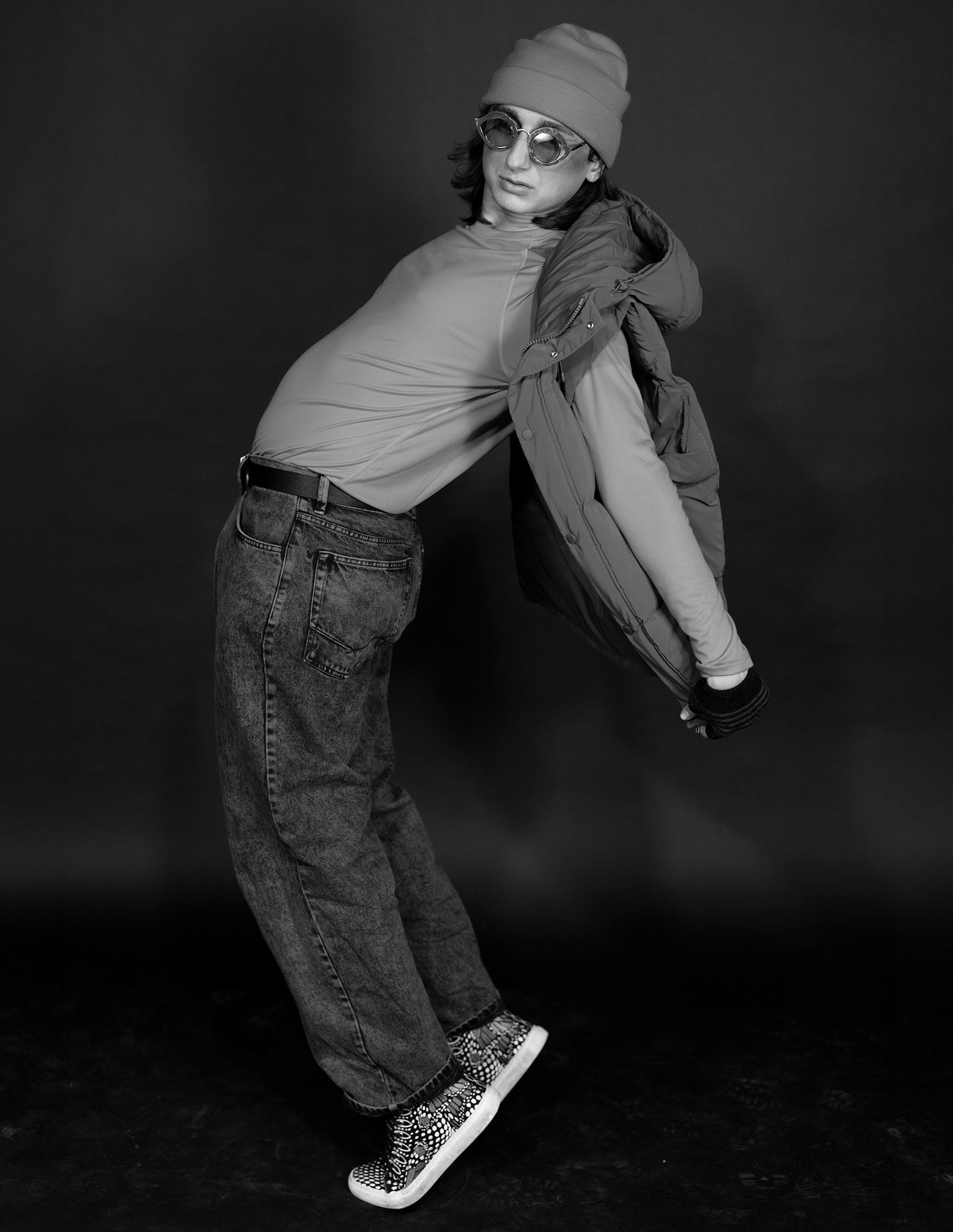




Co-Editors in Chief
head Beauty artist
Editorial Director
Head Stylist
Head Layout Designer
Managing Editor
Head Photographer






Co-Editors in Chief
head Beauty artist
Editorial Director
Head Stylist
Head Layout Designer
Managing Editor
Head Photographer
Writers
Stylists
Beauty Artists
Models
Photographers
Layout Designers
Photographer: Alya MacDonald ’25
Hana Dolan & Sophia Viscarello
Abigail Lowder
Sadie Chase-Tatko
Iman Rahman
Sawyer Kron
Ilana Frid-Madden
Amanda Sedaka
Hadley Noonan, Emma DiGiacomo, Bryna Jekogian, Katrina Nelson, Paige Hescock, Ella Mathis, Alex Yang, Whitney Riley
Ester Choi, Anny Chen, Eliana Mannes
Emma Henderson, Sri Masturzo, Ocie Siegell-Gori
Jennie Weisbrot, Mia Horvath, Nicole Soret, Bella Ocava, Alexa Wolfson, Hao Shen, Jaime Chow, Mer Jenny, Alya MacDonald, Lana Anghel, Kaveesha Soysa, Trevor Wilkes , Amanda Sedaka, Yashiya “Shi” Crespin, Anna Totilca, Eliza Behrke, Emma DiGiacomo, Mattie Buneta, Zoe Weissman, Will Strutton, Asha Ganesan, Anais Geronimo, Xavier Schlemmer, Ranen Deb, John Crespo
Kathleen Blass, Norbu Lhendup, Gori Goto, Liam Selendy, Alessandro Vasquez, Alya MacDonald
Mina Stevens, Fumi Yatsuhashi
Dearest Readers,
Welcome to the 22nd edition of Signature Style — we’re so happy you picked up a copy! This issue feels especially meaningful to us, as it marks not just the close of another semester, but the end of our time as both Editors-in-Chief and as Hamilton students.
As the year winds down and graduation edges closer, we’ve been reflecting on our four years in Sig Style and on campus. From photographers to co-Editors-in-Chief, we’ve been lucky enough to be side by side through it all, whether we were playing around with studio lighting, brainstorming shoot themes, or curating the perfect launch party cocktail list. Now, though it’s bittersweet to leave this chapter behind, we’re turning our focus towards the possibilities ahead. Our issue pays homage to this convergence of past and future, beginning with a bold black-and-white exploration of an imagined tomorrow that leads us into the history of futuristic fashion–seeing how the future has looked through the eyes of the past.
We would be remiss not to mention that one of the main joys of running Sig Style this year has been getting to work with our incredible team. Between the seasoned wisdom of our returners and the fresh visions of our new additions, the talent, confidence, and passion that each and every EBoard and GBoard member brought was truly unmatched this semester. Despite the experience of being returning editors, this semester wasn’t without its challenges for us (re: the multiple snow storm cancellations and photo studio vinyl background falling out of the ceiling). However, it’s thanks to the tireless dedication and creativity of our writers, stylists, beauty artists, layout designers, photographers, and models
that we were able to persevere through challenges and craft a magazine that stands as a vibrant celebration of artistry and self-expression. We are so grateful to have created alongside all of you and thank you for making our last semester one that we can be immensely proud of.
Special thanks to Bret Olsen, Hamilton’s Manager of Academic Technology & Digital Teaching Support, for granting us photo studio access and to Student Activities Program Coordinator Chloe Maldonado and the Pub staff and programming team for their launch party support.
In this edition, fashion serves as our language for exploring identity, innovation, and imagination. From honoring the power of monochrome and the elegance of business professional trends, to celebrating self-expression across sexuality and ability, every page is a testament to how style shapes and reflects who we are. As we move beyond the familiarity of campus and learn to navigate post-grad life, we’ll carry with us the idea that fashion is more than simply what we wear–it’s an everyday act of self-expression—a way of shaping how we move through the world and how the world sees us.
Signature Style has been a constant through our four years here, and with each edition, we’ve been so fortunate to grow alongside a truly incredible community. With that, as you peruse these pages, we hope you feel the same excitement, pride, and imagination that made Signature Style 22 possible!
xoxo, Hana and Sophia

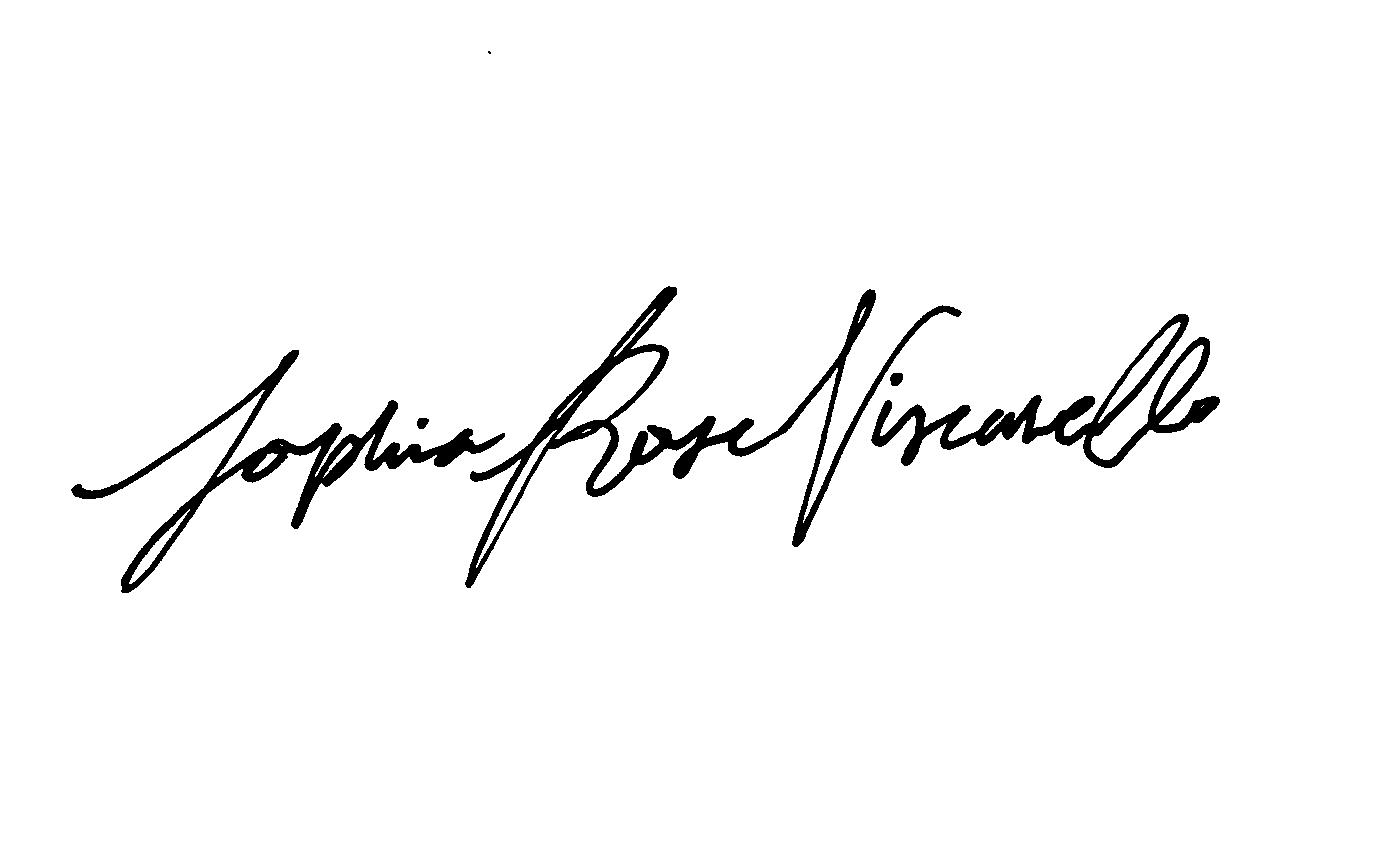


By Emma DiGiacomo ’25


the creation of dystopian worlds within media has given central stage to unique visions of the future. From the sandswept lands of Dune to the neon flash of Blade Runner, the visuals of such worlds offer reimagined conceptions of ‘futurism.’ First developed through the Italian art movement of the early 1900s, futurism is defined as rejecting traditional forms to celebrate the dynamism and energy of modern technology. Futurism found its way to fashion, mediated through a series of differing takes of utopia represented through style. It is fitting to begin exploring futuristic fashion through the lens of the past. Retrofuturism is defined as an aesthetic considered inventive at an earlier point in time. For example,
Back to the Future II with its flying cars and self-tying laces was a vision of 2015 that did not come to fruition, but is idealized by modern viewers for its nostalgic style. Alya MacDonald ’25 represents retrofuturism through a vintage, babydoll dress. Green pops of color appear throughout the outfit, from MacDonald’s hoop earrings, eyeshadow, and accents in the dress. MacDonald’s hair is left loose to fall in natural waves, expressing the freedom and fun that retrofuturism envisioned. Contrasting the flowing silhouette of the outfit are dark, thick boots that reflect the contradictory nature of retrofuturism as going back in time, but in the name of the future.





Shifting to a more toned-down style, Hao Shen ’25 expressed a vision of the future known as solarpunk. Best compared to a wasted apocalypse, solarpunk is seen through the worlds of Dune and Mad Max with the lines of humanity and nature blurred. In terms of background, solarpunk was a literary and artistic movement that strived for a sustainable future that is in harmony with the environment and it gained traction in
the 2010s. Within fashion, that utopia is represented through neutral, earthy tones, such as the warm brown of Shen’s shirt. Reminiscent of the metal pieces found in the costuming of both Dune and Mad Max, Shen was draped in silver chains across his back, biceps, and chest. The cool tone of Shen’s eye makeup, as well as thick, silver bangles combined aspects of constricting machinery with the freedom of nature.



A differing view of futurism is nanopunk
which began as a subgenre of speculative fiction that explores worlds where nanotechnology is dominant. For example, advanced artificial intelligence falls under the label of nanotechnology. Lana Anghel ’26, represented the theme of genetic modification and how it alters the sense of self. With the aim of showcasing the reconciliation of robots with humans, metallic elements appear throughout the outfit. For example, a sequined silver skirt, safety pins in the hair, and a silver mesh top mimics the stereotypical image of a robot. Anghel’s makeup furthers this idea with metallic lipstick matched with hard, cool-toned lines around the eye area. Additionally, nanopunk is considered a grunge style, so the inclusion of a leather jacket alongside tall black boots incorporated a darker feel to the outfit.


Set against nanopunk is cyberpunk, an aesthetic worn by Mer Jenny ’26. Rather than a coexistence of artificial intelligence with humans, cyberpunk fixates on an oppressive future where computer technology reigns supreme. A gritty, neo-noir feel categorizes cyberpunk, as Jenny donned an all-black skater dress with matching leather overcoat. A consistent theme between Jenny and Anghel’s outfits is metallic aspects, as Mer featured silver bracelets, layered necklaces, and chains draped over their black boots. Jenny’s makeup falls under the label of cybersigilism, with its fine-lined patterns akin to human veins mingling with digital networks. The swirling nature of Jenny’s makeup works against Anghel’s straight, rigid lines, emphasizing the contrast between the two aesthetics.



While the eras of futurism contradict through both thematic elements and fashion representation, the creativity involved in these aesthetics cannot be understated. Utilizing fashion as a tool for expressing a utopian vision demonstrates the power that style has rather than being diminished to simply clothing.


of the Hamilton community, jewelry is a mix of meaning, personality, and storytelling. Unlike fast fashion, jewelry lingers by subtly shaping how we present ourselves. As one’s personal style evolves, these pieces remain, becoming a part of daily routines and an extension of identity.
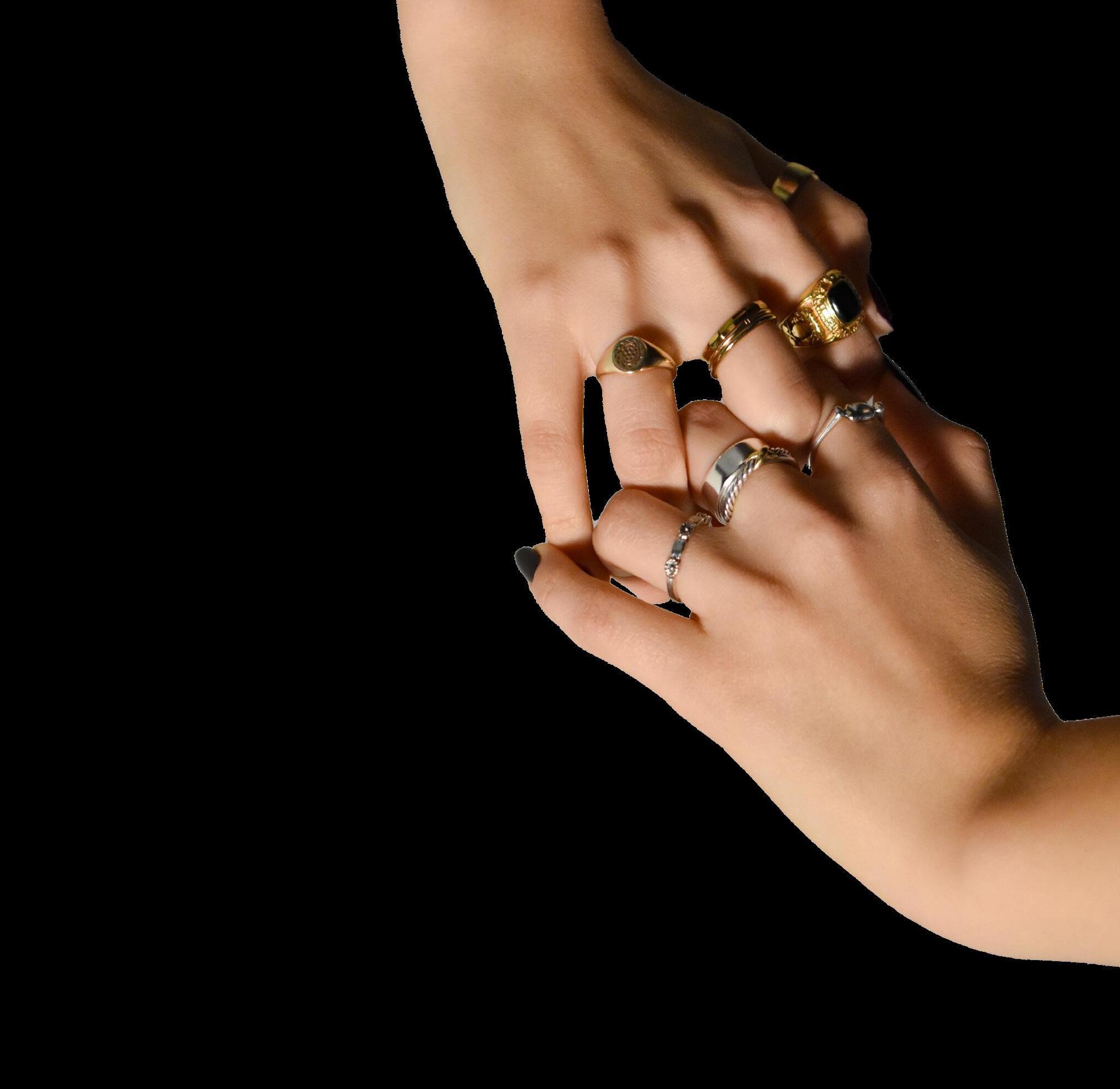

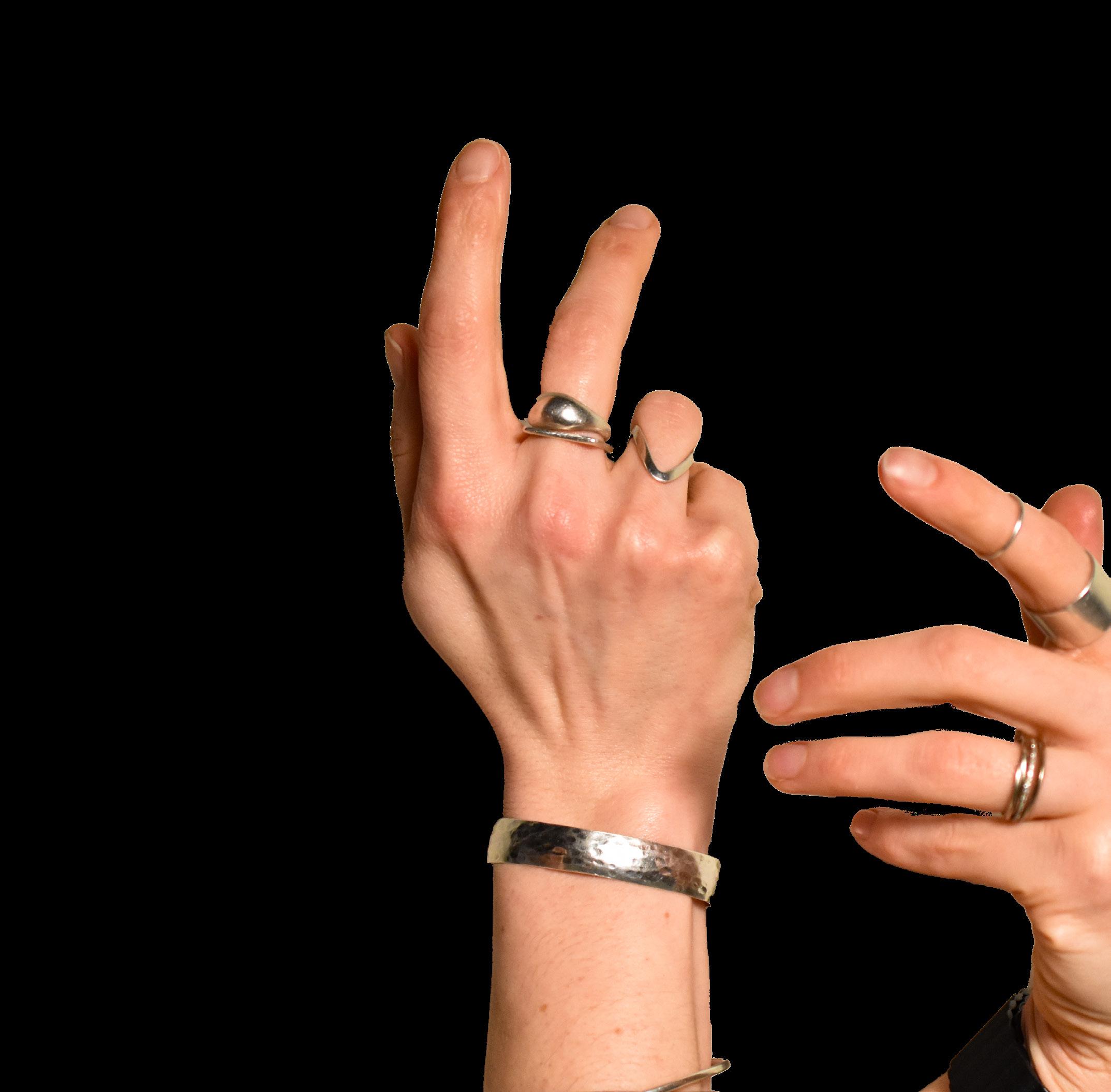

Iman Rahman ’26 wears jewelry that allows her to add excitement to otherwise monotonous items. By embellishing her winter boots and glasses, Rahman transforms everyday essentials into statement pieces. Rahman described her personal style as “everything all at once,” and she appreciates being able to turn the ordinary into something uniquely her own. Rahman grew up crafting her own jewelry, and she loves “to mismatch earrings to show off” all that she has handmade. Bedazzling her boots was another “passion project,” a way to bring a personal touch to something practical by turning function into fashion. For Rahman, jewelry is about storytelling through layering pieces that reflect her creativity and mood.

For Rachel Budd ’25, rings are more than just accessories, but tangible connections to her past. “All my jewelry is from my family friend,” Budd explained. “When she passed away, she left me all her jewelry in her will, so I inherited all of this. I wear it every day because I love the way it looks, but it is also very special to me because each day I wear a little piece of her.” Over time, Budd’s appreciation for the rings has evolved. Budd noted, “She collected the rings over the course of her life, and I remember thinking they were gauche when I was younger, but now they are very in style.” Budd’s rings also shape how she presents herself, as she observed, “Accessorizing makes me feel good. It takes your outfit to the next level.” For Budd, rings are a daily reminder that style is a way to carry history,
sentiment, and self-expression with her wherever she goes. For research librarian Alex Wohnsen, jewelry is both a constant and an evolution. “I’m wearing one of the very first rings I ever wore, but I wore it on my other hand until I got married. It was my mom’s ring when she was a teenager, and I’ve just added jewelry to it ever since,” Wohnsen explained. Some pieces never leave her body, as “most of this I wear even while sleeping and showering,” while others have come and gone. For example, “It has ebbed and flowed over the years. I used to have a big bangle, but I stopped wearing it.” For Wohnsen, jewelry is adaptable yet enduring. “I’ve always felt that jewelry is distinctive but can exist with everything else,” she said, emphasizing how seamlessly it had become part of her daily life.
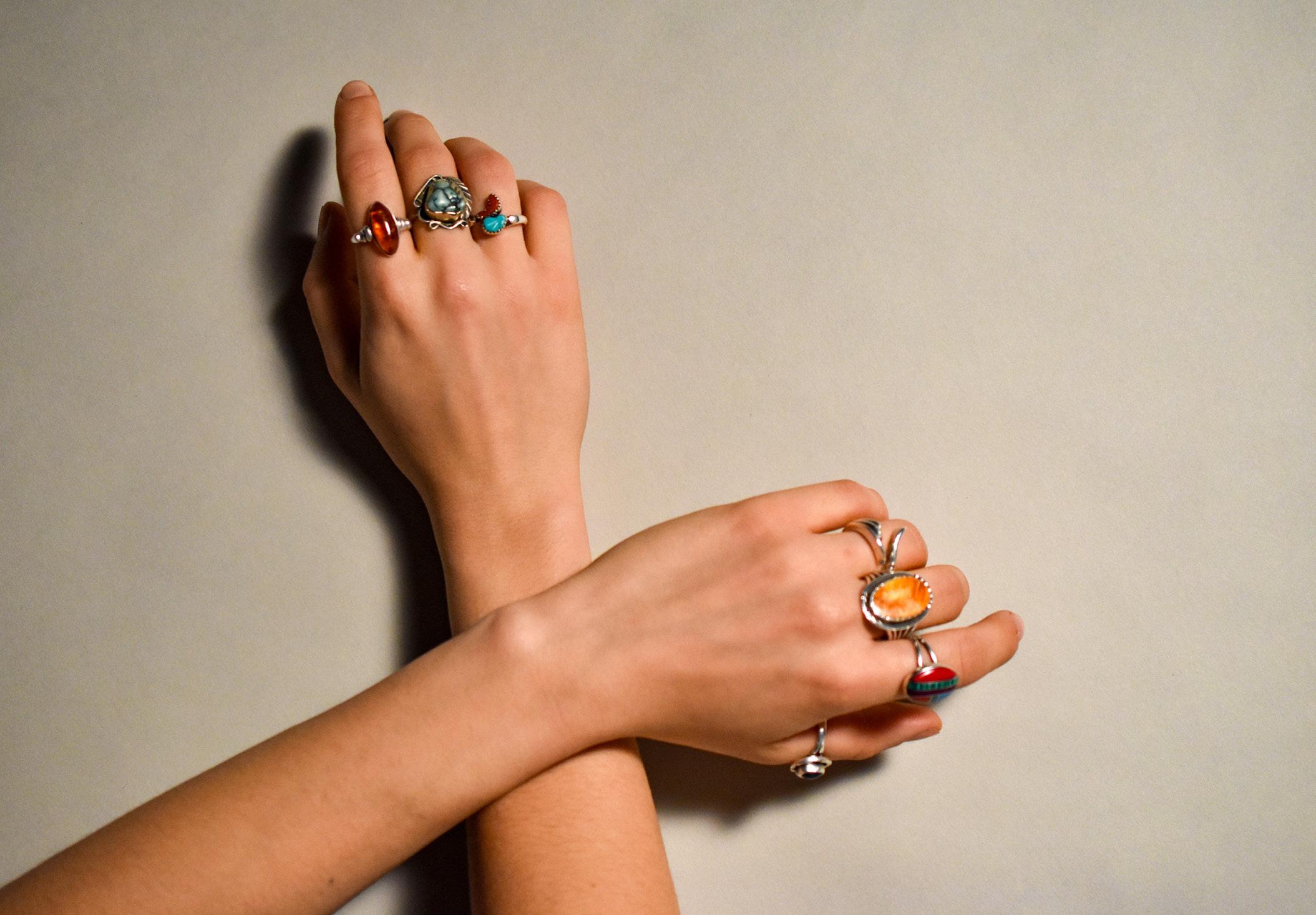
Photographer: Sophia Viscarello


described jewelry as her personal archive. As Socha explained, “Jewelry is my way of remembering the places I’ve been and different moments in my life.” Each piece holds a story as she wore a flower ring from studying abroad in London, a buffalo stone from a ski team trip to Steamboat, and a bracelet from a local art fair with her mom. Over time, certain pieces became tied to different phases of her life. “I go through phases with my jewelry and eventually I start to associate certain pieces with memories,” Socha said. Recently, Socha started wearing a pair of earrings she loved in high school, observing that “I wore these earrings all the time freshman year of high school and just started wearing them again.” For Socha, jewelry is a way to relive the past while time moves forward.
Jewelry serves as a link between memory, identity, and self-expression. Beyond accessorizing, it reflects important moments, evolving alongside the wearer while preserving connections to the past. For Socha, Wohnsen, Bud, and Rahman, each piece—whether inherited, collected, or rediscovered—shapes their understanding of their personal style. As fashion trends shift, these pieces endure, demonstrating how jewelry functions as a lasting marker of experience and individuality.
Movie posters carry a sense of power unlike any other promotional material
These single images encapsulate a film’s mood, themes, and gives audiences an immediate sense of what they will be viewing. Some movie posters become so iconic that they take on a life of their own through being reproduced and tacked onto dorm walls, printed on t-shirts, and constantly pop up in pop culture.
The first film poster ever made was created through lithography by Parisien artist Jules Cheret in 1870. Before the poster debuted, movies were announced with block text and simply included a film’s title and the names of the director and producer. The invention of the movie poster gave life and creativity to a medium that was historically mundane. These initial posters from the 19th to early 20th century were hand-drawn and included intricate lettering. In the 1920s, as silent movies became popularized, film posters grew more intricate and colorful. As the century progressed, so did the proliferation of Hollywood movies.
The 1950s are considered to be the golden age of Hollywood, and the posters that accompanied this era’s movies were just as stunning as the movies themselves. Posters were dramatic and aimed to capture a film’s tone, as well as highlight the featured stars. By the 1960s, movie posters became more abstract and included vivid, intense colors. These posters featured photographs more often than the illustrations of past movie posters. Many iconic movie posters came out of this era, such as those of A Clockwork Orange and The Rocky Horror Picture Show. Posters of the 1980s and 90s featured bold designs which reflected the action, sci-fi, and horror films which were increasingly
popular in this era. Movie posters in the 2000s and on have been influenced by the digital era. Technological tools like Photoshop have allowed movie posters to become more sleek and appear more advanced. These posters typically feature the main character and include simple backgrounds.

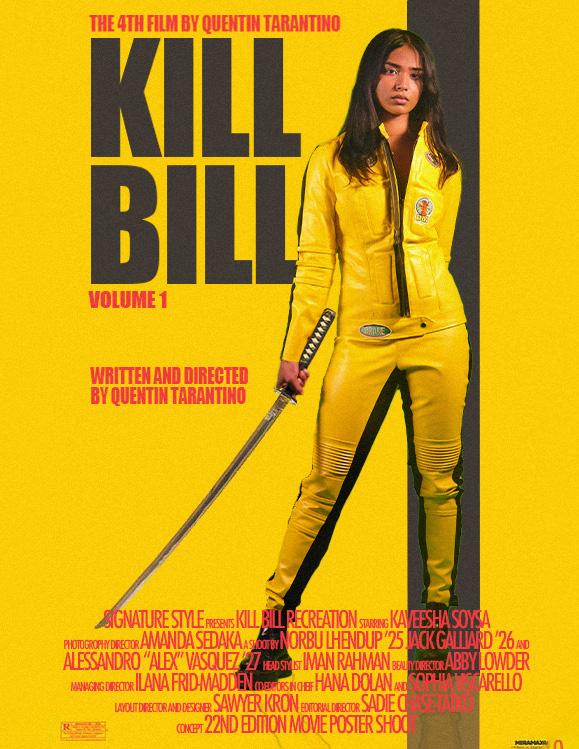
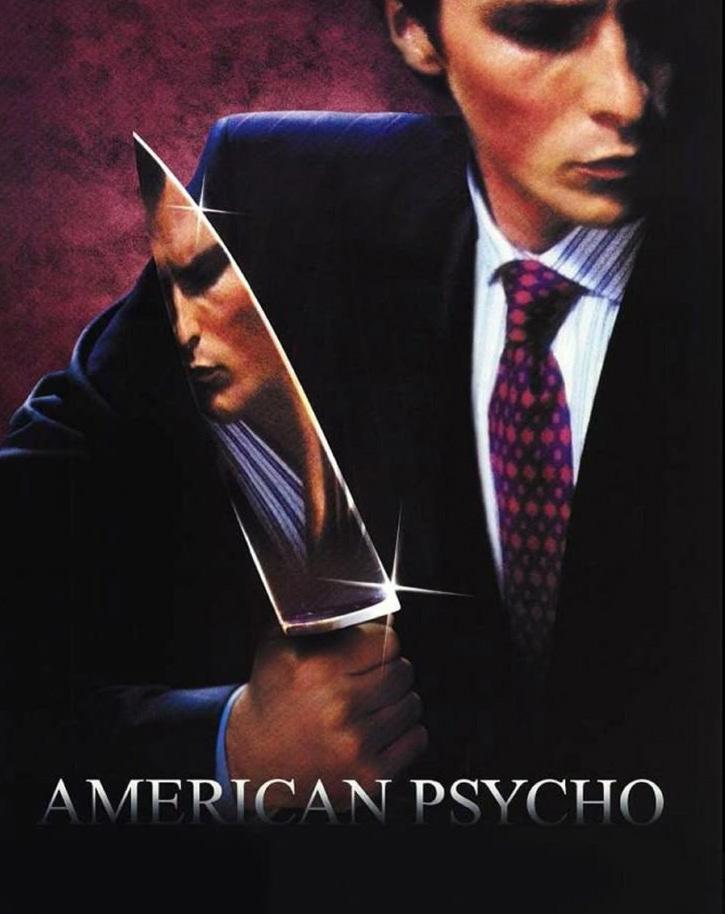
Fashion has always played a key role in defining a movie’s visual identity, and posters have reflected fashion trends through the decades. Posters from the 1950s depict women in elegant and sometimes revealing gowns and dresses. The fashion shown in posters in the 1960s were sleeker and more simplistic. The posters of the 1980s include men’s streetwear and more casual outfits. 2000s womenswear fashion trends are featured in posters of this era. The posters of Freaky Friday, and Mean Girls showcase y2k outfits that include simple silhouettes. Our models mostly recreated film posters from the decade of the 2000s including American Psycho (2000), Kill Bill (2003), Casino Royale (2006), and Jennifer’s Body (2009). The final movie our model depicted was Pulp Fiction (1994). The imagery of these posters vary, but they each reflect the trends of movie posters of the era.
When Signature Style set out to recreate famous movie posters, our models discovered that becoming these images required more than just dressing up; the shoot became about inhabiting and becoming a character.


Trevor Wilkes ’ ,a film major,chose to embody Daniel Craig’s James Bond from Casino Royale.
To Wilkes, this film is the ultimate James Bond movie. It has an exciting plot, beautiful locations, a compelling villain, and includes the best Bond theme song: “You Know My Name.” Wilkes’ choice to portray Bond was not just about his love for the film—it was personal. He grew up watching Bond movies with his father and it became a tradition that shaped his love for movies.
Wilkes emulated Bond’s look from head to toe. He tied his own bowtie (with the help of some Signature Style members), slicked back his long hair, and embraced what he described as Bond’s “brooding” presence. Although the poster only contains Bond’s top half, Wilkes dressed in a tuxedo along with dress pants and dress shoes to get fully into character.
While Wilkes admitted that he does not fully relate to or identify with his Bond character, he felt grateful and excited to be able to step into the role and embody Bond. He commented that “every guy should get to be James Bond once” because “it’s important to be confident.” On the day of the shoot, he lived out the glamour and danger of Bond’s world. His photo is complete with the moody lighting and sleek styling of the Casino Royale poster.
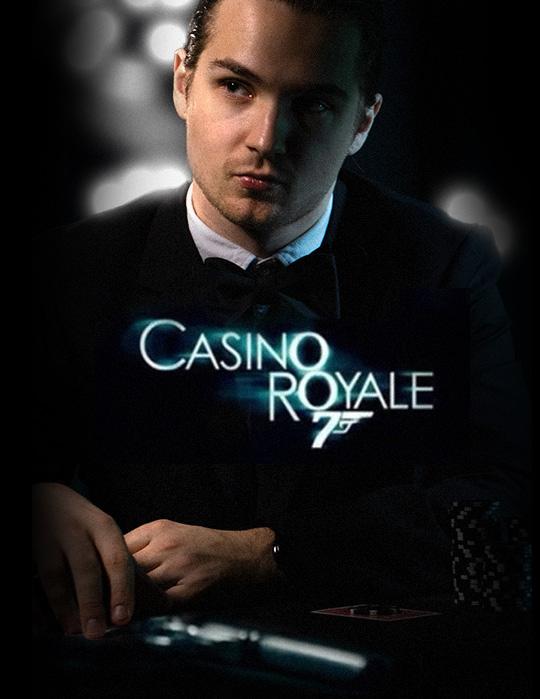

WWhen Eliza Berke ’25 thought about iconic movie posters, that of Pulp Fiction immediately came to her mind. She noted it is the “best-selling print at poster fairs” and that she often notices the poster hanging in people’s dorm rooms. The poster image includes Uma Thurman’s character of Mia Wallace lounging on a bed with a cigarette and a gun. The photo is simple, yet it instigates feelings of danger. Berke commented, “There’s a beautiful simplicity to [the poster]. It hints at violence in such an understated way.”
While Berke appreciates Pulp Fiction as a film, her choice of movie was more about the image itself than the film. She is an art major and is fascinated by the way posters visually represent films by condensing entire narratives into a single frame. For the shoot, she wore a wig and full makeup; this was far off from her usual look of a bareface and simple clothing she “throws on.” This transformation was part of the fun for Berke as it represented an opportunity to step into a different persona and reinterpret a classic poster.


Kaveesha Soysa ’26 had never seen Kill Bill in its entirety, but she understood the essence of Uma Thurman’s character. She was excited to recreate a poster from the 2000s because she feels nostalgia from movies of the era. For the shoot, she purchased an exact replica of the yellow jumpsuit that Thurman wears and branded a fake sword. The outfit and the character she stepped into both made her feel like a “badass.”
Anna Totilca ’27 chose American Psycho not just for its aesthetic appeal but because of its complex protagonist and villain, Patrick Bateman. “It’s fascinating how such a horrible person can be so attractive to so many people,” she said. She appreciates the satire of the film but noted that many fans seemed to miss this point by idolizing rather than critiquing Bateman. Totilca wanted to capture the irrational anger Bateman felt by embodying all of the tensions and contradictions in his character.
For Amanda Sedaka ’25, this shoot was a unique opportunity to embody a character very different from herself. She is usually behind the camera as a photographer for Signature Style and wanted to step around the lens to be the subject. Sedaka loves the film Jennifer’s Body, but she relates more to Amanda Seyfried’s character than the star of the poster, Jennifer. She was excited to embody the cool and seductive energy of Megan Fox’s character by using makeup, hairstyle, and of course the iconic red outfit.
Photographers: Norbu Lhendup ’25, Alessandro Vasquez ’27
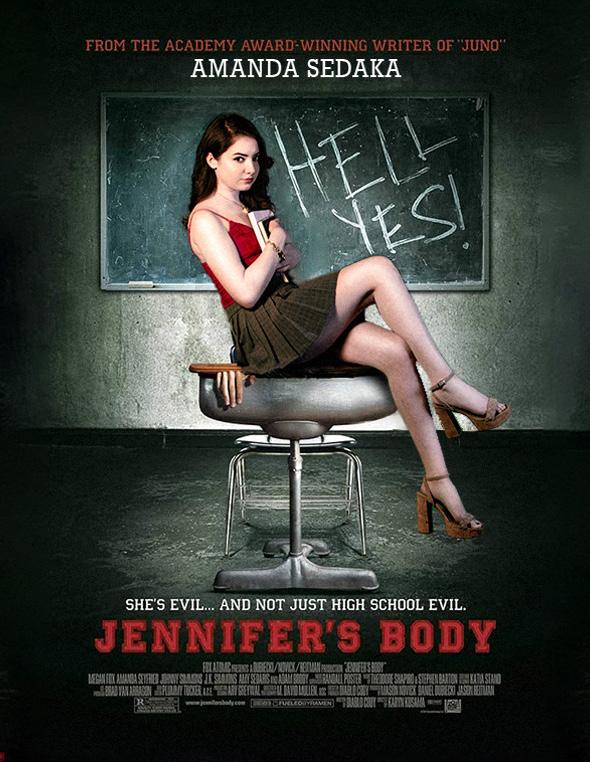

Django Unchained holds a special place in Shi Crespin’s ’26 heart because the movie “brings to life a character that embodies all the hope that was not there” during the time of slavery in America. Crespin has valuable experience with movie posters and designed the cover art for Our Lady of 121st Street, Hamilton College’s main stage production in the fall of 2024. He understands the importance of movie posters and wanted to deeply express the cowboy character and aesthetic on the poster. He felt the power of the cowboy while listening to the clicks of his boots which brought him into the character.
All of our models got into the right headspace for the shoot by dressing up as identically to their character as they could and invoking the spirit of the character. Their remade posters showcase our stylists’ talent and our models’ passion for movies.

Fashion trends at performing arts award ceremonies have seen a negotiation between cosplaying and method dressing in 2025. In recent years, many actors have dressed in reference to another celebrity’s iconic past look (cosplaying) or have donned an outfit that references the movie they are currently promoting (method dressing). Actors have used method dressing through the 2010s, but the practice became increasingly popular in 2023 when Margot Robbie began her promotion tour for the Barbie movie. She consistently wore Barbie pink or outfits that mimicked iconic Barbie doll outfits. Method dressing has remained popular since, and this trend was upheld on red carpets this award season.
Ariana Grande and Cynthia Erivo have committed to method dressing along the Wicked tour circuit through 2024 and 2025. At the 2025 Oscars, Grande wore a pink Sciaparelli gown in a canonical Glinda-pink tone with sequins and rhinestones. The silhouette was reminiscent of Glinda’s dress in the first scene of Wicked with its peplum and tulle skirt. Erivo also committed to method dressing at the Oscars, wearing a deep emerald green Louis Vuitton gown. The color references her character, Elphaba’s, skin tone and the color of the Emerald City.
Some fashion reporters are proposing that celebrities are replacing method dressing with cosplay dressing this award season (Vogue, 2025). Five of Vogue’s 28 best-dressed attendees at the 2025 Oscars referenced the looks of onscreen characters or real celebrities. These characters were unrelated to any role that the actors had played.
At the 2025 Golden Globes, Kylie Jenner honored a Spring 1999 Versace dress which Liz Hurley wore to the CFDA Awards in 1999. Jenner put her own spin on the number, choosing to wear the dress in lilac rather than the original silver. Naomi Campbell and Kate Moss, both staples of the ‘90s celebrity zeitgeist, famously wore similar dresses from this Versace collection.
“Zendaya paid homage to the famous Black singer and activist Joyce Bryant.”
Zendaya’s dress referenced the cover of Bryant’s 1954 album, Runnin’ Wild, which featured the star Zelda Wynn Valdes in a skin twight floral gown which fans out at the knees in front of an orange background. Zendaya’s dress features the orange background color and appears in a similar silhouette, although her dress is skintight from bust to ankles and includes fabric flowing out and sideways, originating at the hips.
Method and cosplay dressing are techniques actors employ to do what they are best at: reference characters. Method dressing may be more appealing to the general public, because the characters that famous actors are referencing can be fairly obvious. Recognizing a moment of cosplay may be more difficult to the untrained eye. Thankfully, fashion writers can quickly recognize the look that a celebrity is referencing and report it to a less historically fashion-minded audience.


How would you style a Perry the Platypus shirt and a pair of faded jeans? As for John Crespo ’26, he wouldn’t. He’d go for a striped shirt and plain pants instead. Since he was a child, he has dressed plain and simple. To Crespo, there was no practicality in wearing flashy, colorful clothes. The first time his mom threw a pair of jeans and a graphic T-shirt onto his bed, he instantly ran back into his closet and rummaged around for something that shouted “sophisticated”, or at least something close to it. While this simple style worked for Crespo in the time being, he felt a lack of fulfillment in his fashion. After arriving at Hamilton and acquiring his first job, he finally had the proper income to invest in the clothing he wanted. And he did not hold back. From buying dress shirts and slacks to dress shoes and waistcoats, anything that was considered casual in his wardrobe ceased to exist.
Crespo shares his motives behind dressing in a more oldfashioned way, saying
Embracing modernity means giving in to an era where superficiality and overconsumption triumphs sincerity and moderation. He believes that “fashion’s devolution from elegantly thoughtful preparation to mass-produced ultracasualness reflects a deterioration of morality, decency, virtues, and work ethic.” However, he doesn’t reject modernity completely. In his spare time, he works at the Digital Arts Lab as a digital media intern. As an intern, he learned how to edit videos in Adobe Premiere, how to edit photos in Photoshop, and how to build a website. As much as he wants to reject modernity, he recognizes that completely rejecting it is not possible nor productive. He enjoys the convenience and benefits of modern technology, but he does so with moderation. When writing essays, he doesn’t rely on a laptop to get the job done for him, but writes with pencils and paper. When listening to music, he doesn’t open up Spotify, but rather creates the music himself. He establishes a
balance between using technology and not, realizing that it is impractical for him to get rid of it entirely.
Crespo doesn’t dress these ways for superficial reasons, instead, he dresses up “to discourage [himself] from accepting these disparaging social norms that can be seen as incredibly pessimistic.” His style isn’t a reflection of fictional characters, but rather a collection of the virtues from the past, where he’s mostly inspired by historical articles and photographs. His minimalist wardrobe and sophisticated style allows him to resist the cravings for instant gratification and the fickle trends of fast fashion. He believes that the current fashion is much more laid-back where everyone fully embraces ultra casualness into their style since it’s easy. But Crespo is in strong opposition to this where his wardrobe mainly contains muted, patternless colors, and he has an assortment of suits, shoes, belts, ties, and coats for the wintertime.
When asked about how he sees his style changing over time, Crespo said “No, I’m not gonna change it. I prefer this. It just feels right.” He believes that in America, when we’re closer to the 2050s, there will be a lot more questioning stares of him because, at that point, his style would be exceptionally outdated. Despite this, Crespo puts in the work to dress nice not only because it feels natural for him, but as he stated “Looking nice should be timeless. Looking nice should not be outdated at any given moment. That’s what I’m looking for.” He simplifies the idea of clothes by stating that they “are just things to cover our bodies.” We are the ones who place meaning on it, so we should feel free to wear any clothing we please without worrying about others’ thoughts. Regardless of what people say about his fashion, Crespo has mastered the act of not caring what others think. He states that “It actually takes a lot of courage to do what I do because I always get stares.” People give him confused looks or even yell at him in a British accent, comparing him to Thomas Shelby from Peaky Blinders, which Crespo doesn’t appreciate. “I am me, my own character. Please do not make comparisons to someone else I do not even appreciate.” he said.
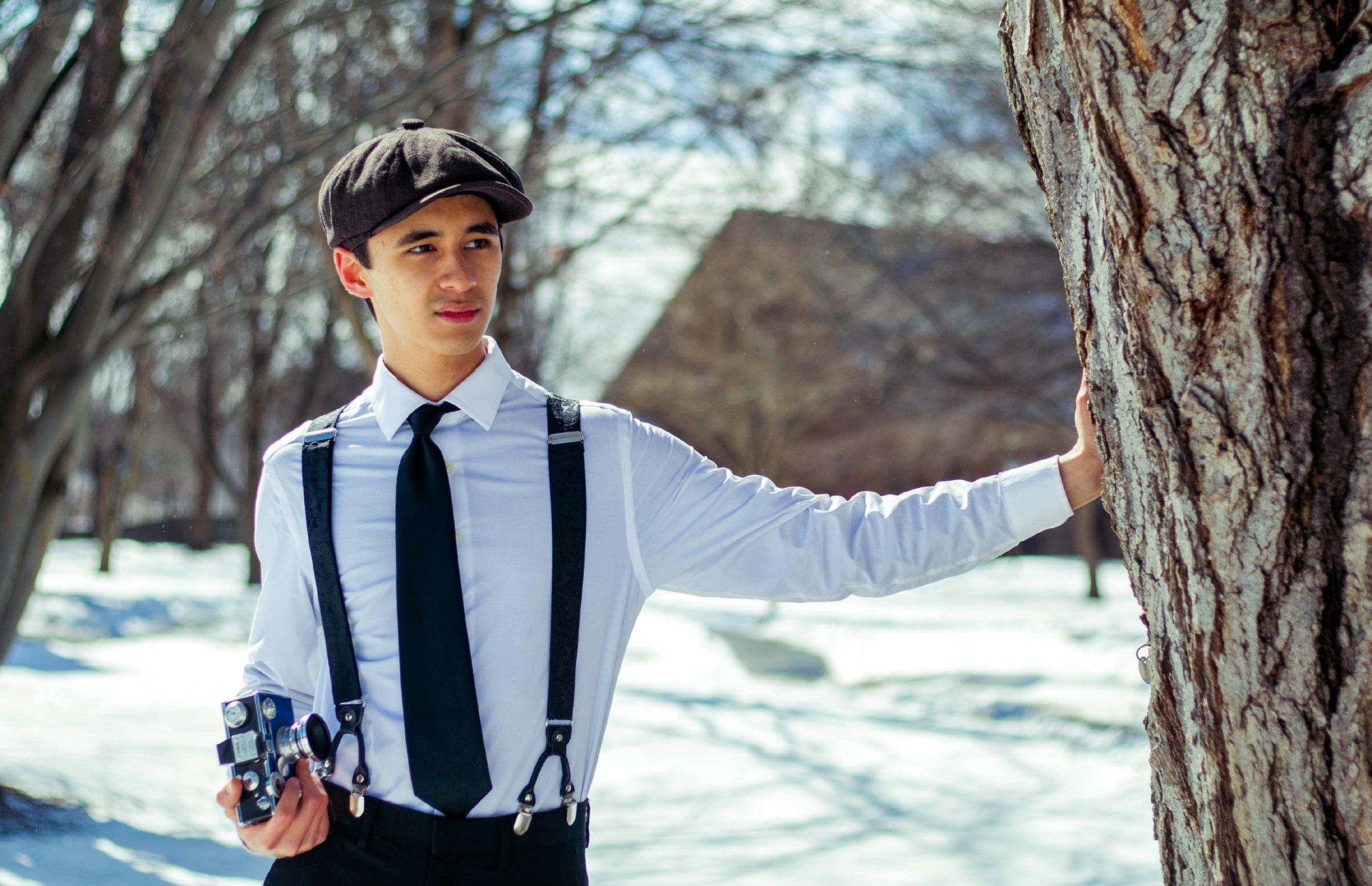
For anyone looking to buy their first suit, John recommends looking for black, grey, or brown colored suits and avoiding anything flashy like red, pink, or navy suits.
“Keeping it simple for your first suit is key.”
However, it is not a muted-colored world. “Variety is a great thing,” says Crespo. There are different colors like beige, navy, and dark green. There are also different fabrics to consider. Different suit fabrics have different looks and breathability. For more information on suits, Crespo recommends anyone who is looking for a suit that looks nice and lasts for a long time to go to a suit shop or a tailor. Tailors are very knowledgeable about suits. “They understand fabric and shape and fit, color, lining, and all those things, including price,” says Crespo. While thrifting suits is an option, it’s not the best option because most suits
available in thrift stores are poorly made and oversized. Fit is really important to look nice in a suit. A thrifted suit can never fit properly even if it was tailored afterwards because the shoulders of the suit jacket are not adjustable. Having a customized suit is the best option because a well-fitted suit always looks the nicest.
Suits are long-term investments. You get what you pay for. Like Crespo said, “If you get cheap suits, cheap pants, cheap shoes, it will fall apart very fast and it does not look good on you at all.” Although suits cost more than casual clothing, they tend to last longer if they are good quality and properly cared for. Crespo advises readers to avoid washing dress shirts or blazers in a machine, as it can ruin the inner linings and make them stiff and brittle. “Those things are meant to be dry cleaned,” says Crespo. As for pants, they should be dry cleaned too. If dry cleaning isn’t an option at the moment, there are other methods to keep shirts

and blazers clean. For example, Crespo always wears an undershirt to protect his shirts from absorbing oil and sweat. A tank top or a t-shirt work great as an undershirt.
Crespo’s advice for anyone trying to craft their sense of style is to not “ be afraid to dress up for yourself. You will look great and you will feel great too because what you wear in a day will really change your outlook on your life, yourself and how productive and happy you are.” Through his experiences of being teased and micro bullied, Crespo says that “it really built up my character. I became more confident, a little stronger against these things”. By not caring what others think and resisting dressing like everyone else, Crespo is a happier person who allows his fashion to be a true reflection of his identity. On a final note, he says “Keep your head up my friends. Don’t be afraid to go against the strong backflow of social norms. So be unique and look great as you do it.”
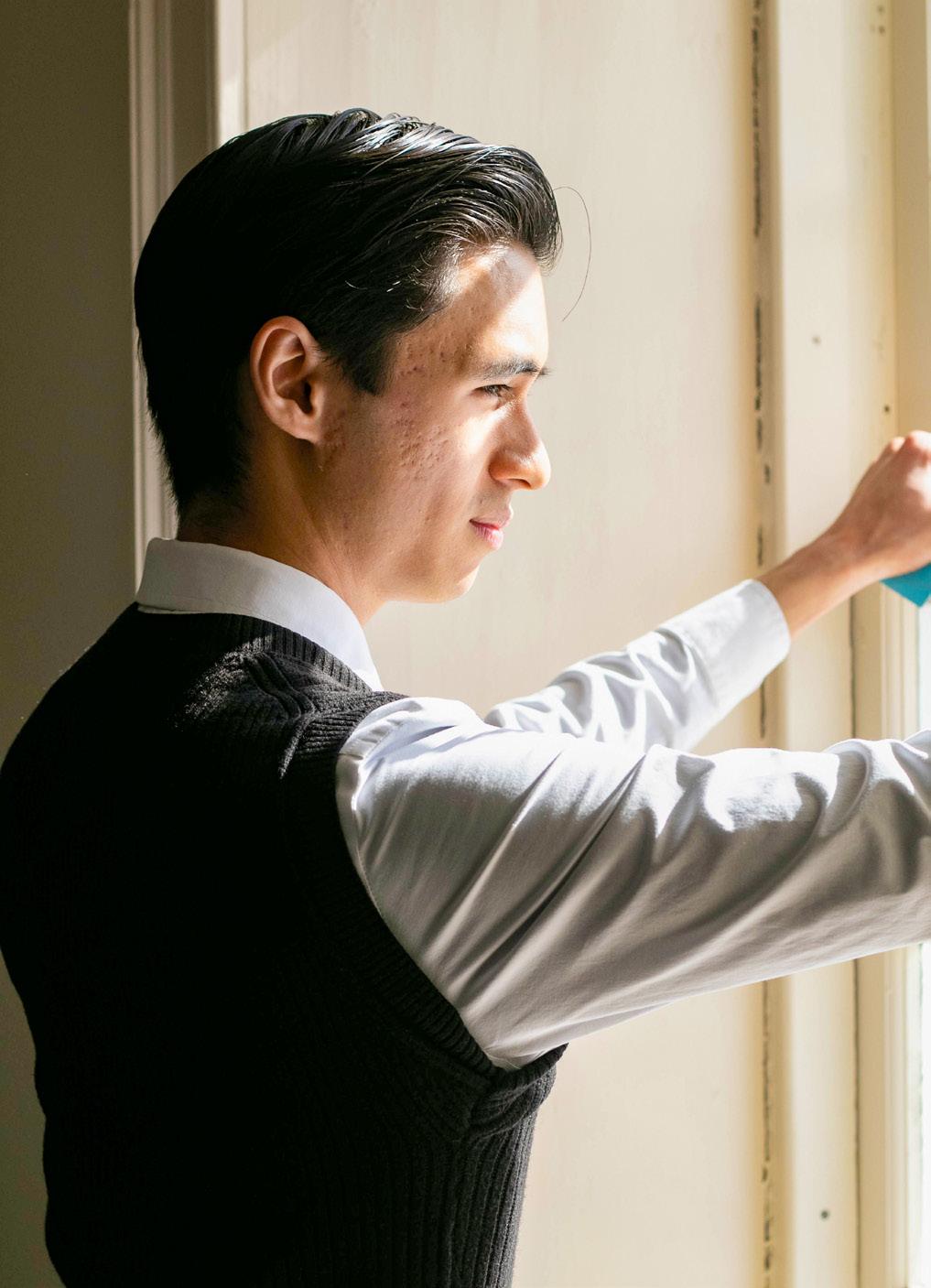


As Hamilton students near the end of spring semester each year and as seniors near their bittersweet graduation, the work world looms. Many students feel pressure to acquire a flashy and marvelous internship or seniors desperately hope for a job offer, and with these responsibilities comes another hurdle: work fashion. The work world is not as lenient as the professors on campus, and students, rather than don sweatpants and cozy sweaters, must layer in a business
By Sadie Chase-Tatko ’25
professional outfit telling the work world that Hamilton has, indeed, prepared them for this moment. However, outside of the protective bubble of the hill, standards, stereotypes, and systems exist that young professionals must navigate. Signature Style asked the models for this shoot to curate outfits for their future work worlds that reveal how they maintain their individuality while also grappling with and following professional attire standards.


Jenny Weisbrot ’25 is interested in a career in business consulting for pharmaceutical companies. Dressed in a pinstripe vest and slacks, she explains that in the consulting world where she will be presenting often, she wants her word to be the focus. She tells Signature Style that “anywhere you can play around with texture and your layers will gain you that individuality, but I don’t play around with color.” Conversely, Mia Horvath ’25 sports red and white gingham pants and shares her adoration for bright colors in her work looks. Interested in the museum space, she explains: “I think it’s always an issue to be taken seriously as a woman in a professional workplace. I’ve had the chance of being in a workspace that a lot of my bosses and who I was working with were young, millennial women and that was such an empowering place to be.” She continues, “I was taken very seriously…encouraged to be more expressive about myself and I think that translates into what I was wearing and how comfortable I felt socially.” Nicole Soret ’25 shares Horvath’s concerns about being a woman in the workplace. She tells the magazine: “Women are definitely sexualized in the workplace, and I think that when women try to express their fashion…it becomes like a little bit sexualized.” Soret thrifted her entire outfit from Thrifty Shopper in New Hartford, NY and shares that she individualizes her work clothes with accessories. “It’s a way to express autonomy over really strict dress codes,” she shares. Esther Choi ’27, interested in law, loves the business professional style and while acknowledging that while she sees the style as inherently masculine, she sees the style growing more popular with more feminine takes on the look.
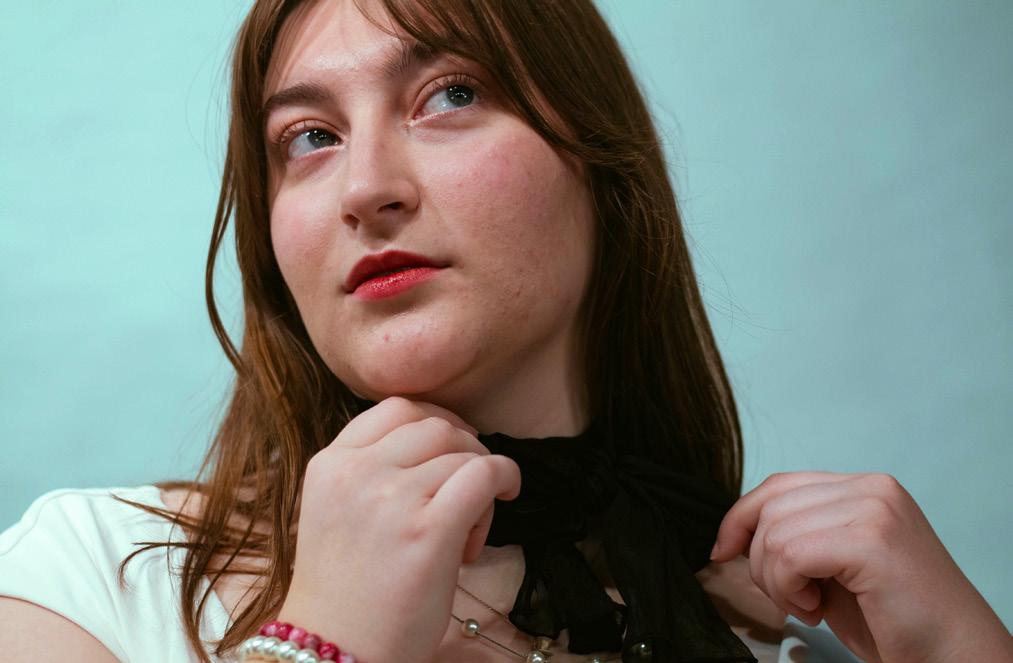


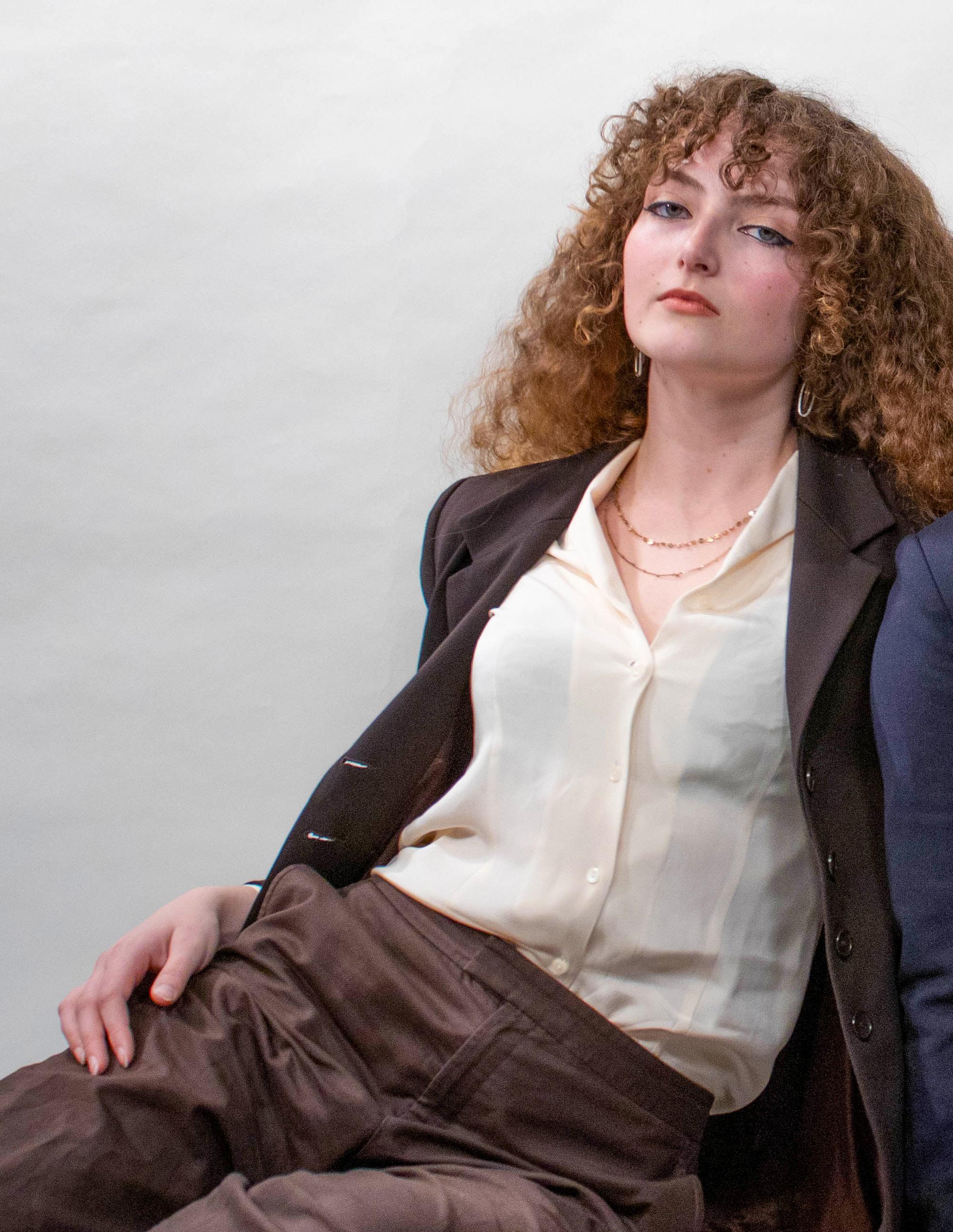
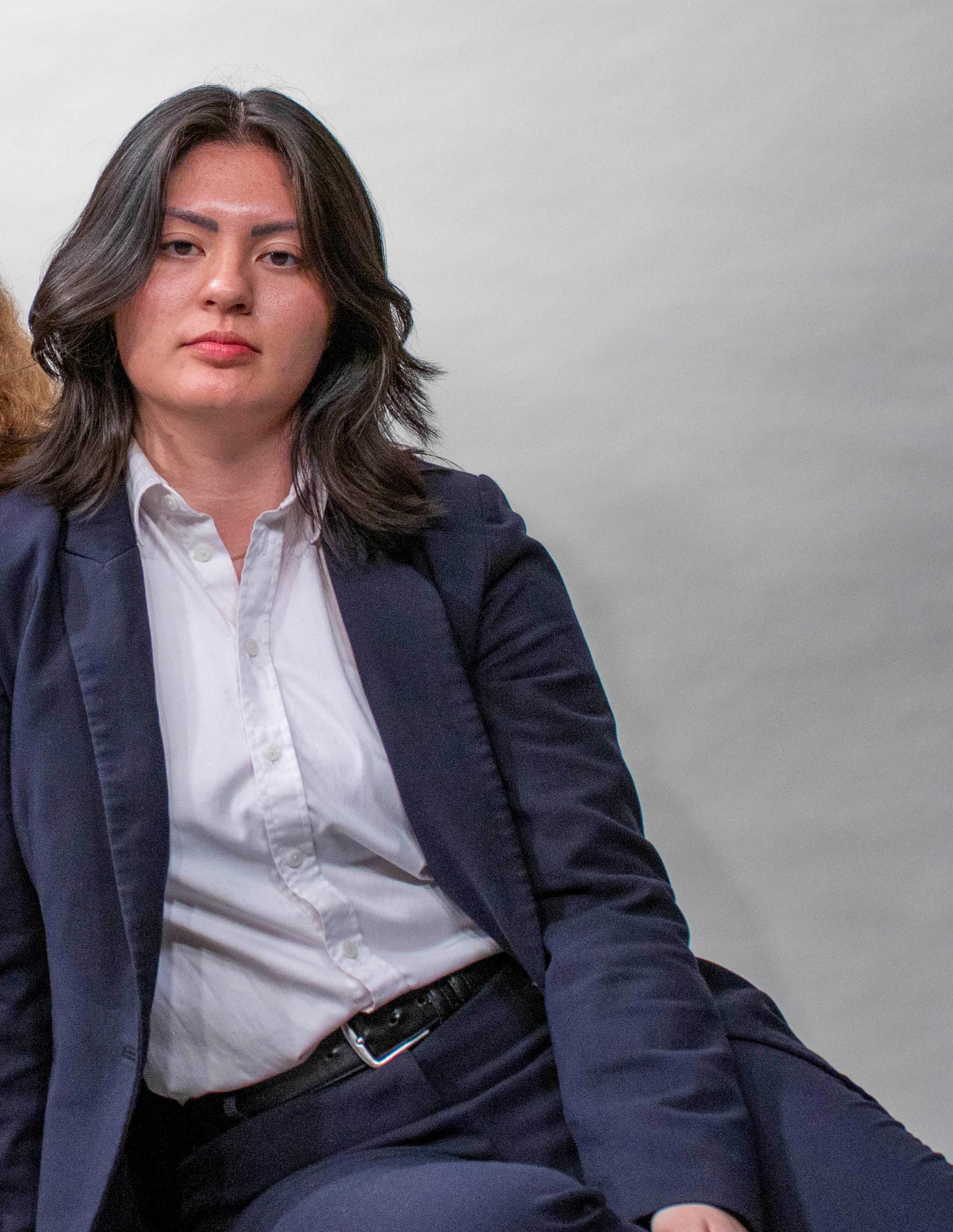
Some models have experience with business professional attire due to their membership in Mock Trial, the College’s organization for students interested in simulating real trials and competing against other organizations across the country. Alexa Wolfson ’26 explains that Mock Trial is a little different from other business professional spheres because their clothes are specifically designed to not be the center of attention. “You’re going to want your words to be the focus, and your performance, your demeanor, as opposed to what you’re
wearing, because we are often in young, female spaces, the judges are older, white men, which is just a different playing field.” She continues, “It’s probably a bleak but good precursor to the professional world.” Isabella Ocava ’25, also a Mock Trial member, echoes Wolfson’s warnings about being a woman in the law field, explaining that to her, maintaining her individuality in the workplace actually means conforming. She explains “The suit is the way to go, it covers my tattoos, and as a woman, it garners me a little bit more respect in the courtroom.”
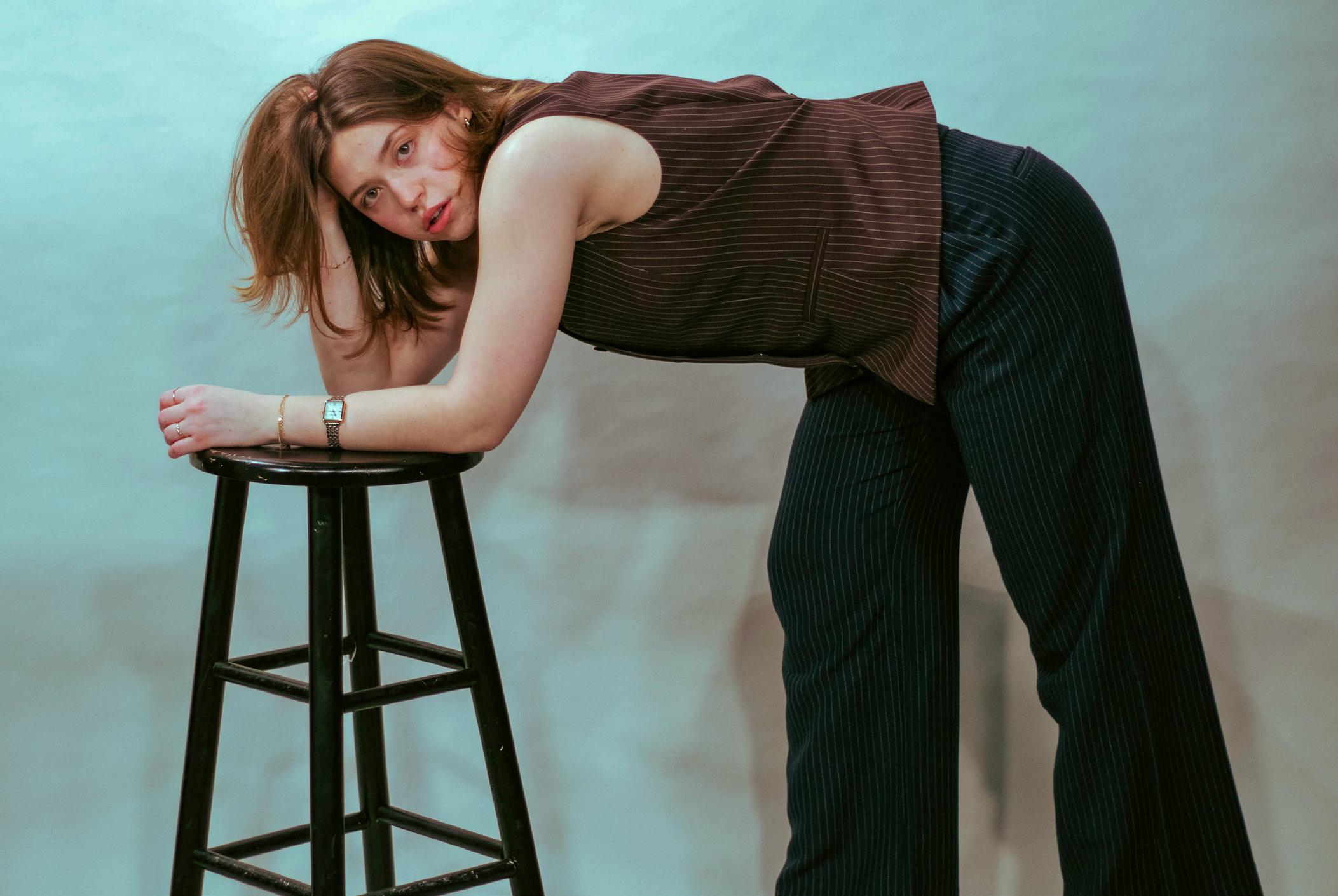


Wolfson and Ocava’s reflections on being a woman in the law space and their recognition of the levels of the playing field speak to the invisible but detrimental systems of beliefs that can severely harm one’s career based on factors they can’t control. Unique hair, tattoos, piercings, modesty, and accessories have real effects on the conception of professionalism and success in the work world, and in acknowledging these truths, we can create a network of knowledge, and also take the first step to dismantling these systems of power that threaten someone based on their appearance. Aware of these barriers, Ocava shares with Signature Style that “I hope to get to a point in my career eventually where I’m judged more on the merits of my work and not exactly what I’m wearing.”

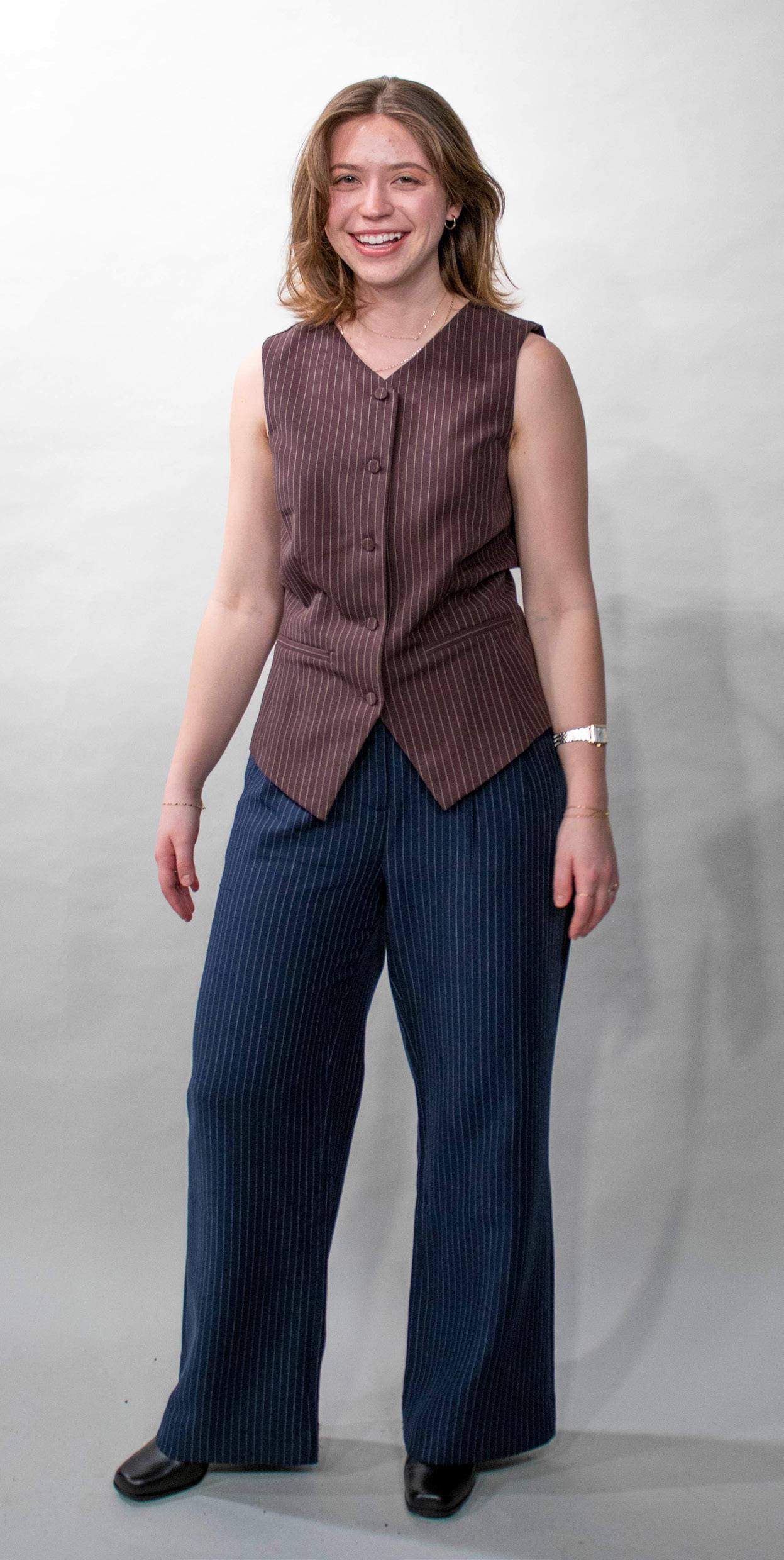

Johannes Itten proposed the theory that different complexions fell into certain color categories. Today, this hypothesis has been transformed, assigning people different “seasons” to dress within. For example, being a “winter” means that your skin tone is likely cool toned, with blue or pink undertones, and you look best in deep reds, blues, and greens.
This idea was popularized in the mid to late 1900s by Coco Chanel’s iconic little black dress and various dressing guide books, such as Color Me a Season by Bernice Kentner, and Color: The Essence of You by Suzanne Caygill. These gave the trend a lot of traction, although neither have any scientific basis that supports their claims.
Regardless, 2024 saw an upsurge of individuals getting color analysis done, and videos of the process have been uploaded to various social media platforms, further popularizing this fad. In a standard color analysis appointment, an “expert” will hold different colors of fabric up in front of a person to determine their season. Based on the results, they tell the client what colors best suit them.
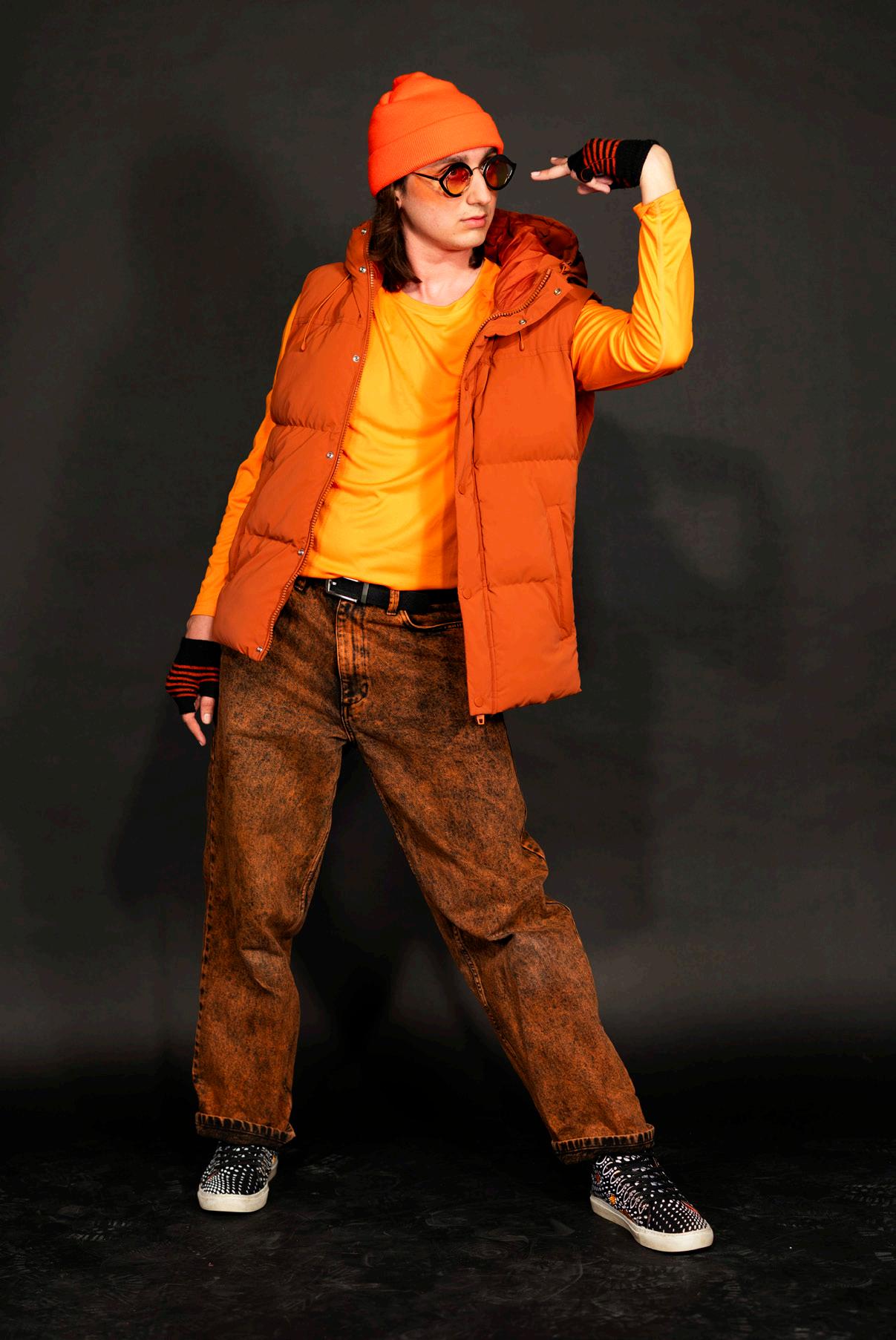
In recent years, with the rise of the “clean girl aesthetic” and minimalism, dressing in monochrome has become popular. This can be seen in pop culture, with celebrities such as Kendall Jenner and Paris Hilton sporting completely maroon and pink outfits, respectively. Brooklyn, NY has seen one of the most prominent examples of monochromatism in Elizabeth Sweetheart, or, as she is more commonly referred to, “the Green Lady of Brooklyn”, who earned a headline in the NYTimes in 2015. Sweetheart has been sporting lime green everything - from her hair to her kitchen supplies to her bath mat - for over 25 years.

However, dressing according to color theory has a cultural history and was not originally intended to be used to limit people’s clothing choices. In ancient times, dressing in a monochrome outfit often signalled higher status or was part of a religious ritual. Current research on the psychology of color suggests that wearing different colors evokes different emotions of both the wearer and people around them. Blue elicits tranquility and trust, red passion and boldness, and pink love, femininity, and calmness. In this shoot, Anais Geronimo displays an all pink look but poses looking strong, challenging this perception of the color. She says that in doing so, she is “reclaiming the color” by associating femininity with power, rather than with weakness.
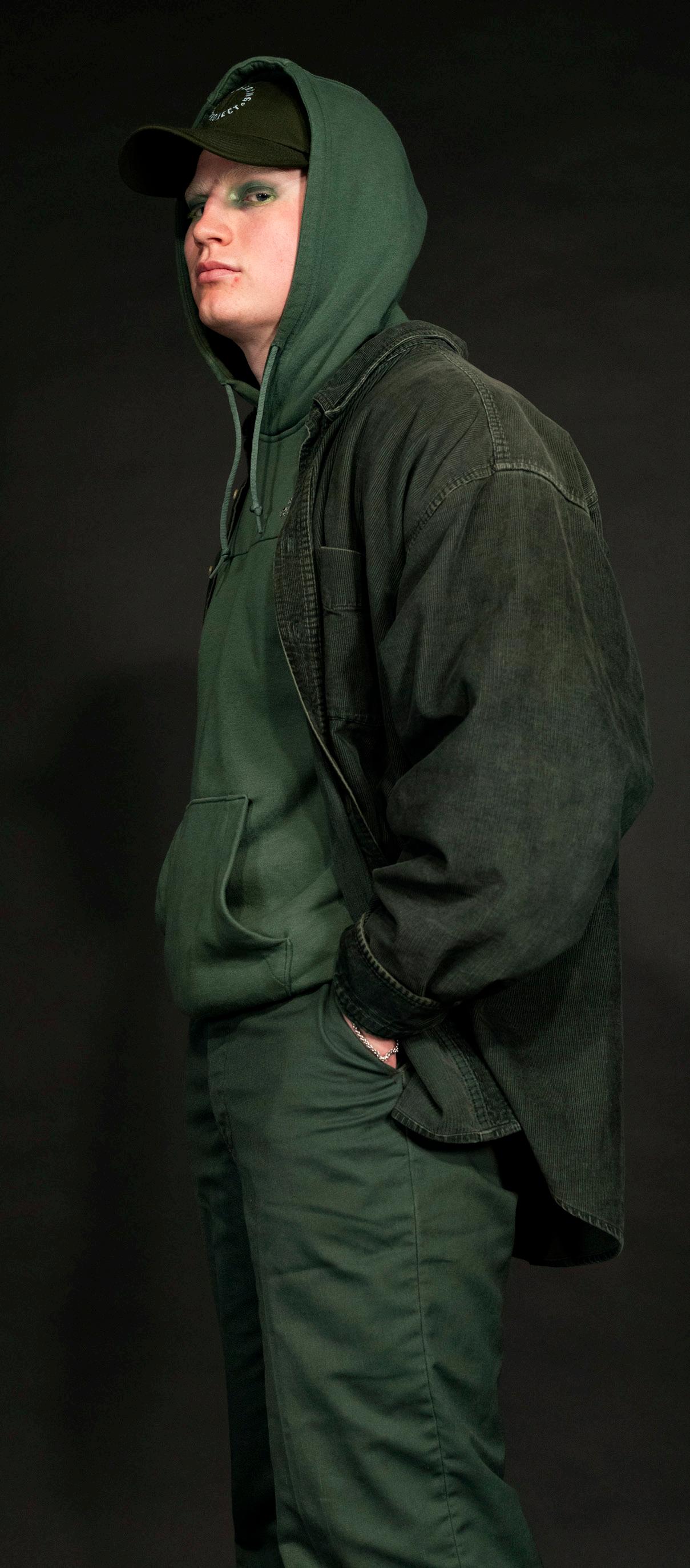
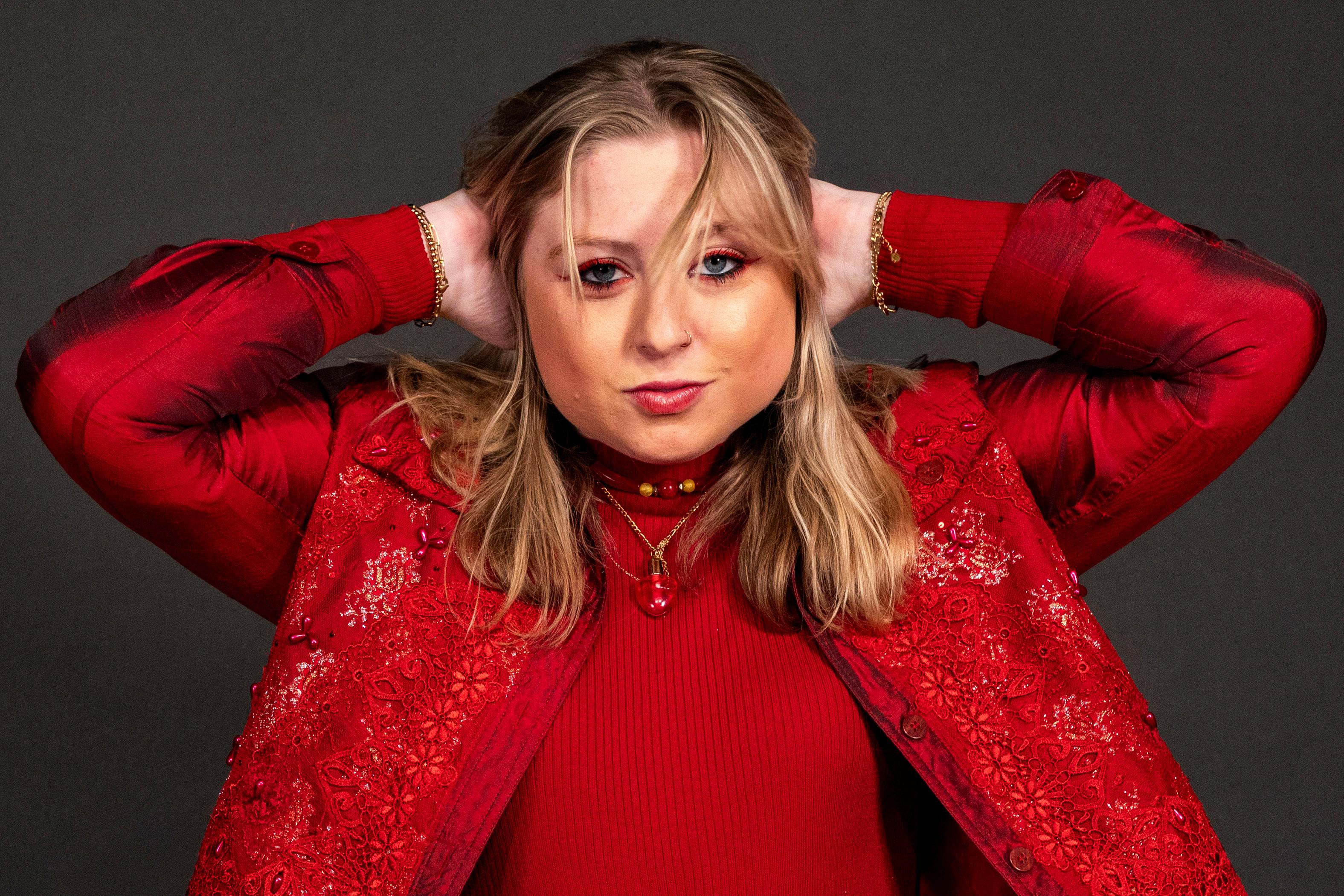
As empowering as many may find learning about how to dress to emphasize their beauty, the trend has come under a lot of scrutiny. One of the main criticisms is that not everyone falls into one of the four seasonal color types, and not everybody who does fall in the same category will look the best in the same colors. But this is the basis of dressing according to color theory, so without these basics being true, the whole theory falls apart. It is also important to note that this trend was popularized by white women for white women, and while the field has become more inclusive, these roots should not be ignored, as the whole process is based around one’s skin color.
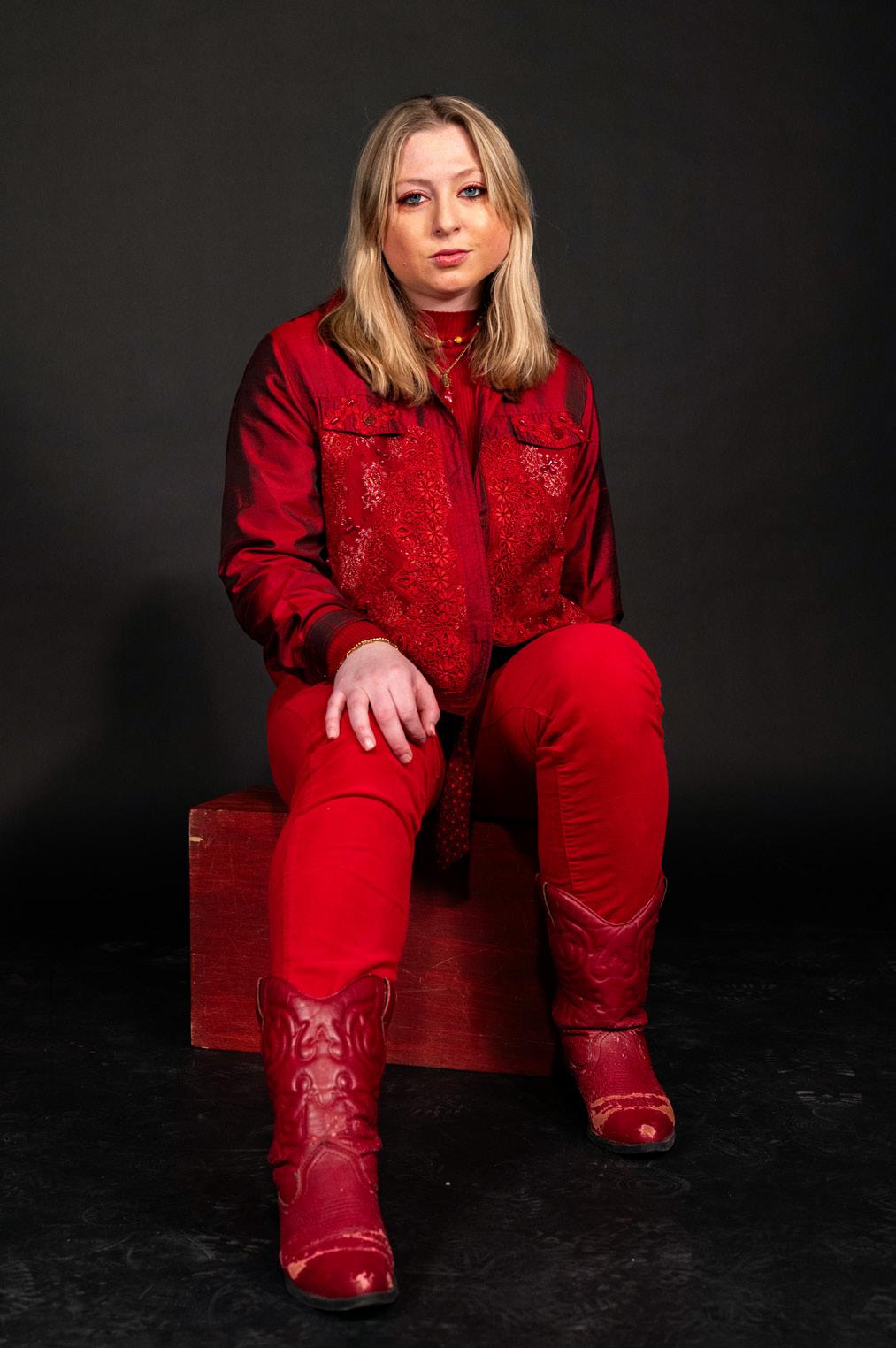
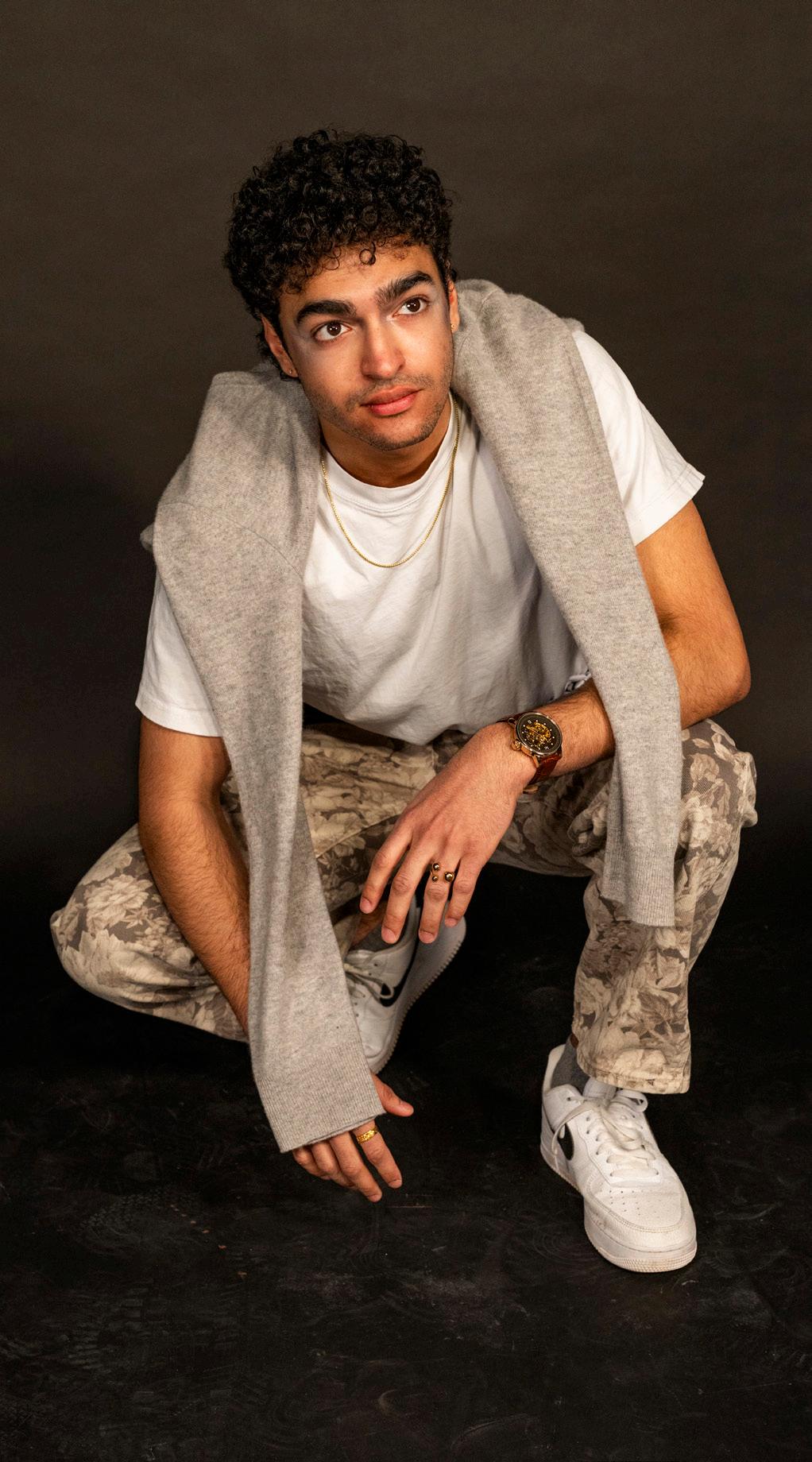
While there is essentially no basis that supports the idea that certain colors are better for certain complexions, many people gain confidence from these sessions, which is likely why the trend is growing. Also, a big reason in favor of monochrome outfits is that they allow individuals to experiment with different textures and patterns. Emma DiGiacomo sports an all red look and makes it interesting with cowboy boots, a textured jacket, and a patterned scarf woven through her belt loops.



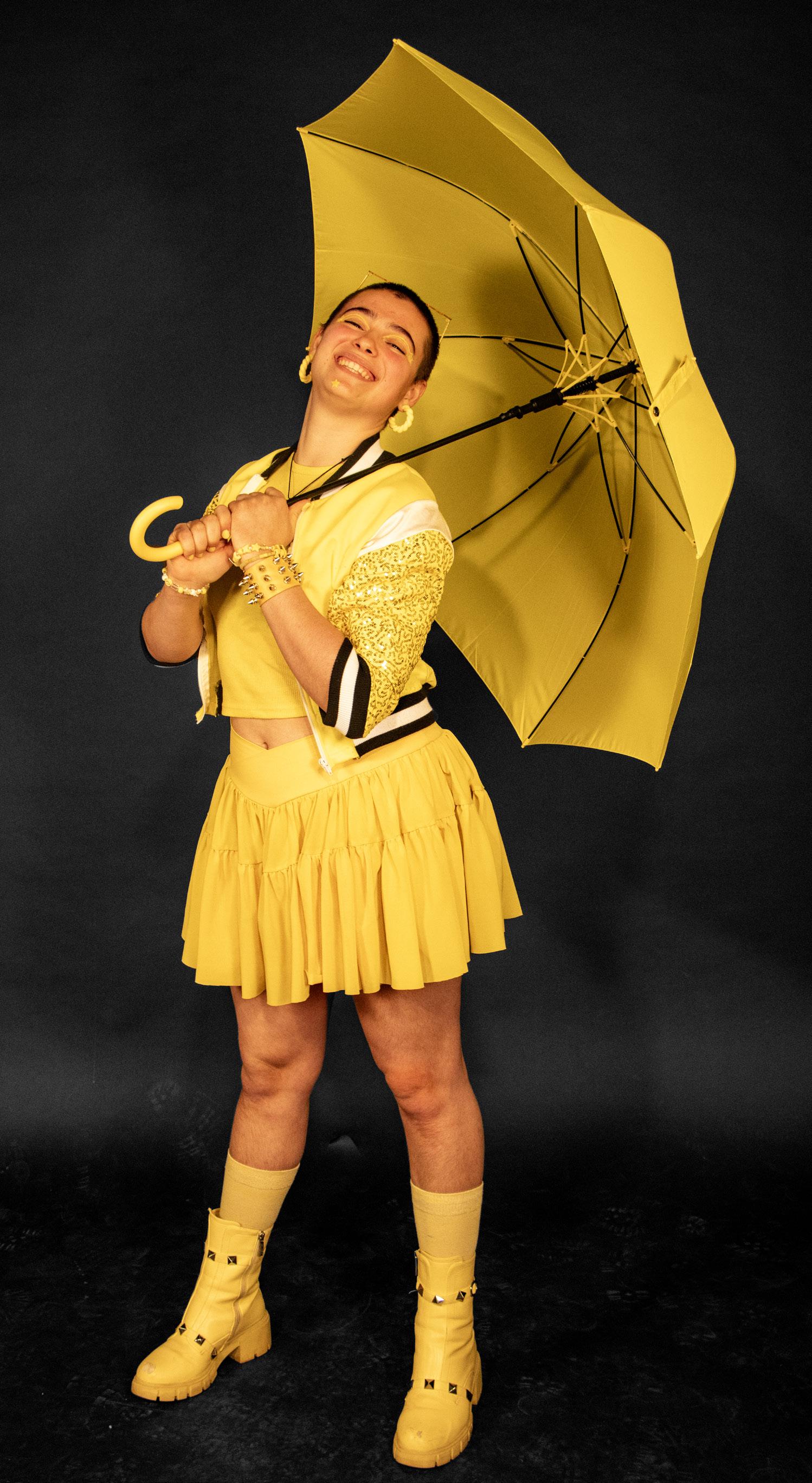

By embracing a Western look, Emma experiments with a different style while not making it too overpowering by limiting her palette to one color. In addition to playing with the fabric in the outfit, a monochrome outfit allows for expression via jewelry and other accessories. Asha Ganesan
wears an all navy look, with blue jewelry, a blue bow in her hair, and blue nails which were done by Ashylia Sloane. She also did her own blue makeup, with some rhinestones near her eyes. These details add a level of self expression that cannot always be conveyed through clothes alone.

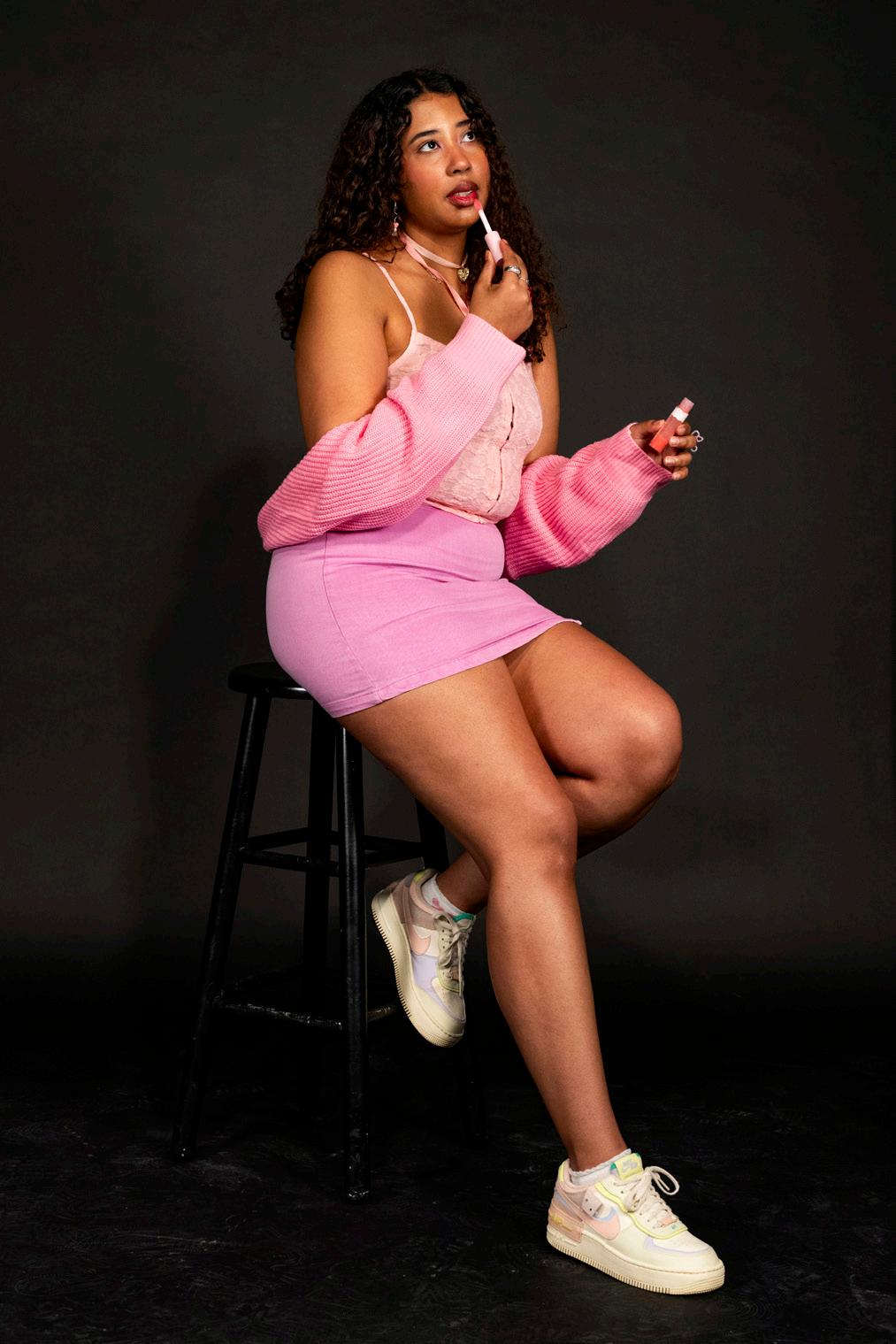
In the end, whether grounded in theory or driven by creativity, the resurgence of color analysis and monochrome dressing reveals a broader truth: people are constantly seeking new ways to understand themselves and express who they are. Color may not define us, but how we use it (boldly, playfully, or intentionally) can say a lot. And sometimes, wearing your favorite shade from head to toe is reason enough.
For decades, lesbians have used flagging, a form of communication that uses clothing to express one’s sexual preferences or queer identity, in their fashioning to identify one another. In 1920s Europe, when more masculine fashion was in vogue for all women, some women adopted particularly masculine appearances like tailored jackets, monocles, and the ‘Eton Crop’ haircut, which became popular among lesbians (Medhurst 2024). One of the first ever lesbian bars was even called Le Monocle, which opened in 1920s Paris but was forced to close when France was occupied by Germany during World War II (Medhurst 2024). Sappho, an ancient Greek poet born on the island of Lesbos, wrote poems about her love for women. She often used the imagery of violets in her poems, and a translation of one of her fragments describes “‘wreaths of violets’ that a woman ‘placed around [her] slender neck’ (Sappho, cited Balmer 1992, p. 46)” (Hutson 2024). Sappho’s poems have been censored over the centuries and her poems have gone in and out of popularity, but her poetry saw a revival in early twentieth century Paris. This popularized the symbolism and connection of violets to the lesbian community:
Monocles and violets were popular symbols of lesbian identity in the 1920s, but as the century progressed, more lesbian flagging accessories emerged. The carabiner as a lesbian fashion signal has unknown origins, but it is believed to have gained popularity in the US during the 1950s. A carabiner is a kind of metal link that is often used for rock climbing, as well as to hold keys. The carabiner has become a lesbian cultural icon even though “as a lesbian fashion phenomenon, the carabiner is far from widely recorded… keys and keyrings, indeed, start appearing in recorded descriptions of butch women from the 1960s” (Medhurst 2024). The carabiner as a keyring is extremely practical and can be easily and conveniently clipped onto a belt loop. Carabiner wear in the cruising community even had an original, now lesser used code itself: worn on the right side to indicate that the wearer is a bottom, and worn on the left side to indicate the wearer is a top.
“The Captive, a play that included two fictional women exchanging bunches of violets as part of their love affair, took to the stages of New York and Paris in 1926. In both cities, the play was frequented by lesbian audiences, and in Paris, lesbians allegedly pinned violets to their lapels as a sign of solidarity and identification. In New York, the play was banned and violet sales dipped throughout the country for almost a decade (Sova 2004, p. 39)” (Medhurst 2024)

The humble carabiner has enduring queer meaning and has exploded in popularity with the rise of social media and the desire for nostalgia and tradition in online lesbian space (Medhurst 2024). The reclamation of historical lesbian symbols as well as the invention of new methods of fashion signalling in the modern day shows the enduring desire for shared history, validation of identity, commonality, and community among young lesbians today.
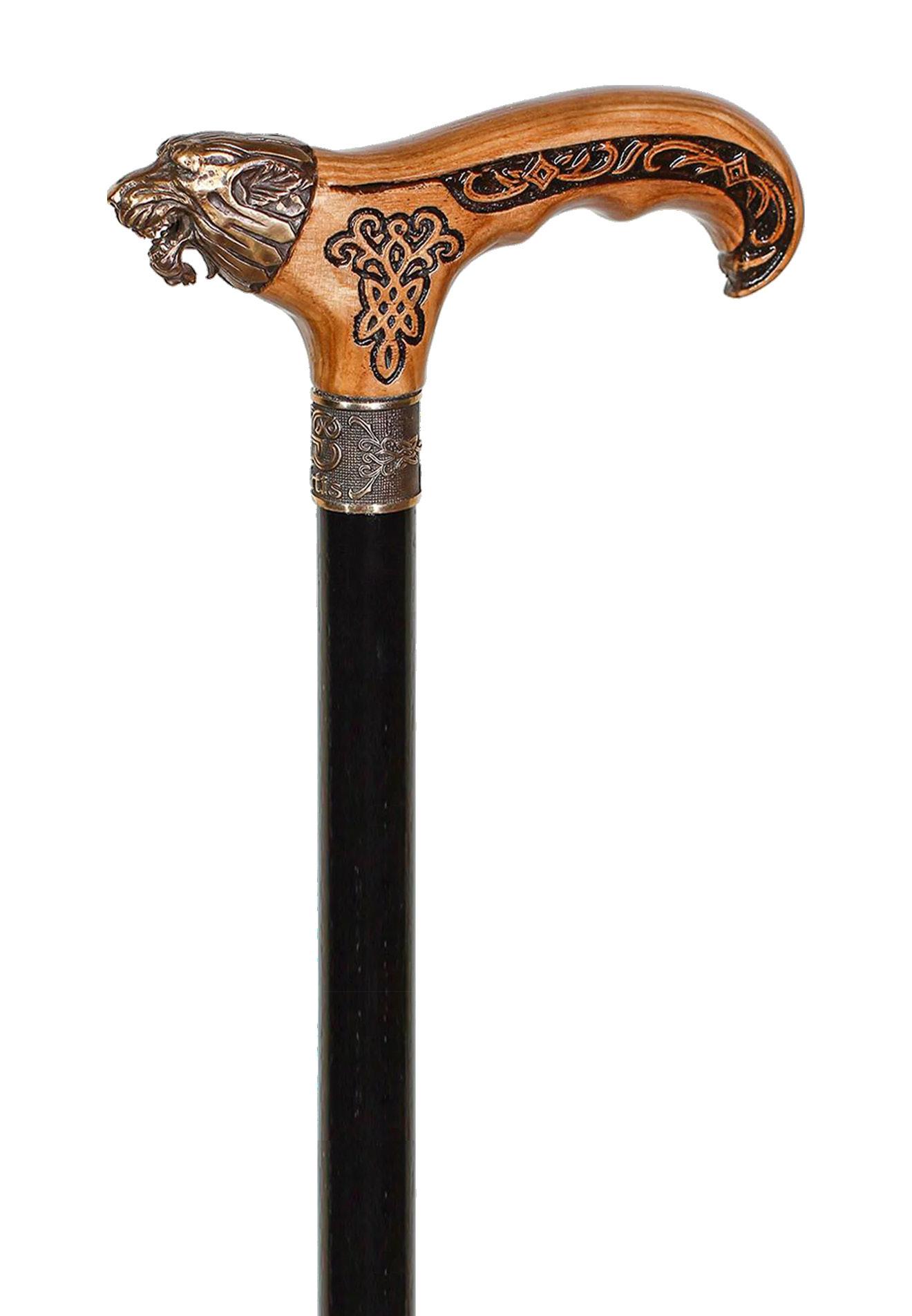
Many people have that one piece of clothing that feels like a part of them that makes them feel special and unique. Whether this is a vintage jacket or a beloved pair of clogs, fashion has the power to reflect our identity and instill a sense of pride. The right piece can earn compliments, boost confidence, and feel like an extension of one’s personality. But for many, this sense of comfort and individuality in clothing has not always been an option.
Fashion is often celebrated as a form of self-expression, yet for the 13% of individuals with physical disabilities, chronic conditions, or mobility challenges, it can also be a source of frustration. The mainstream fashion industry has traditionally focused on aesthetics and trends, frequently overlooking functionality and inclusivity. However, recent years have shown a trend of a more accessible market for fashion.
Accessible fashion, or adaptive fashion, refers to apparel that is made with the intention of accommodating an individual’s disability. This can range anywhere from easy forms of closure to sensory friendly fabric. While adaptive fashion is primarily designed for people with disabilities, it also benefits able-bodied people. For example, individuals recovering from surgery may also find comfort in features like magnetic buttons or slip-on shoes. More than just convenience, adaptive fashion is about dignity, choice, and reclaiming personal style.
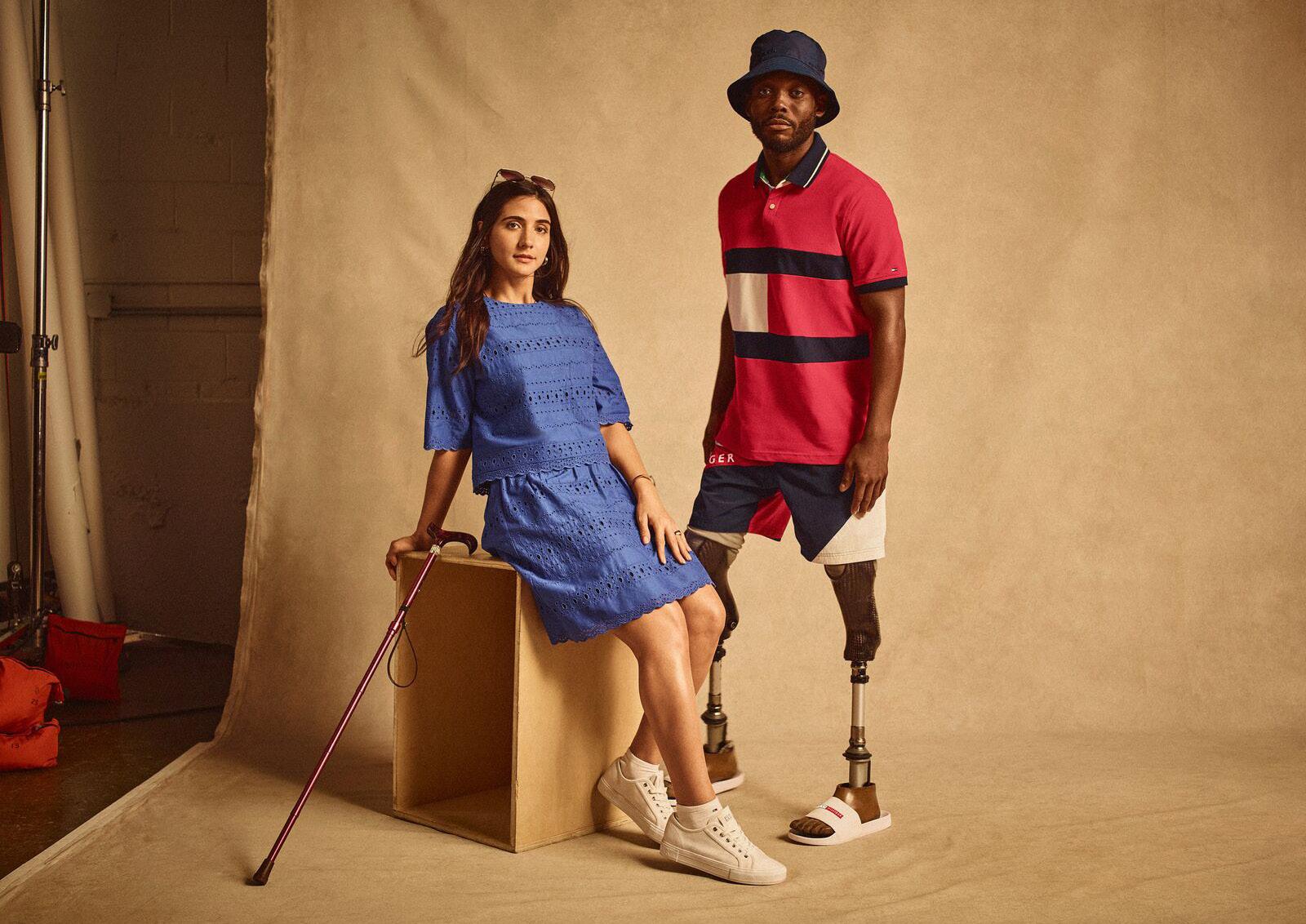
Recognizing the importance of accessible fashion, American sportswear brand Tommy Hilfiger launched its adaptive line in 2017 and has continued to improve the collection since. One of the most significant improvements was the expansion of choices, offering individuals a wider variety of styles and prints. Beyond enhancing the clothing itself, the brand also took important social steps. Previously, its adaptive line was only available online, but the company committed to making more of these garments available in physical stores. Additionally, Tommy Hilfiger made a conscious effort to collaborate with designers who have disabilities, ensuring that those with firsthand experience played a key role in the design process. Adaptive clothing often comes with a higher price tag due to specialized features, making it less accessible to many consumers. Recognizing this challenge, Tommy Hilfiger actively sought ways to keep its adaptive line as affordable as possible.
While clothing is a major part of self-expression, adaptive fashion goes beyond apparel. There has also been a significant push to transform assistive products from purely functional items into stylish, empowering accessories. Rather than feeling different, many individuals find confidence in reclaiming these tools by making them fashionable. For
instance, the brand Fashionable Canes offers a wide range of canes in various styles, catering to all ages and personalities. Whether it is whimsical patterns or gothic skull handles, its collection ensures that everyone can find a design that reflects their unique style.
“This inclusion matters because everyone deserves the freedom to express themselves through personal style.”
Most readers can relate to the discomfort of wearing something that does not feel true to who they are. While some may care about fashion more than others, there is an undeniable frustration when your outward appearance does not align with your identity, which is why adaptive fashion is so important. It is about more than just clothing—it is about equity, autonomy, and self-expression. Individuals with disabilities already face societal stigma and limiting perceptions. Clothing and style should be an avenue for everyone to feel confident and comfortable with themselves.
Providing more fashion choices is not just about accessibility; it is about restoring agency and empowering individuals to reclaim their identity on their own terms.

